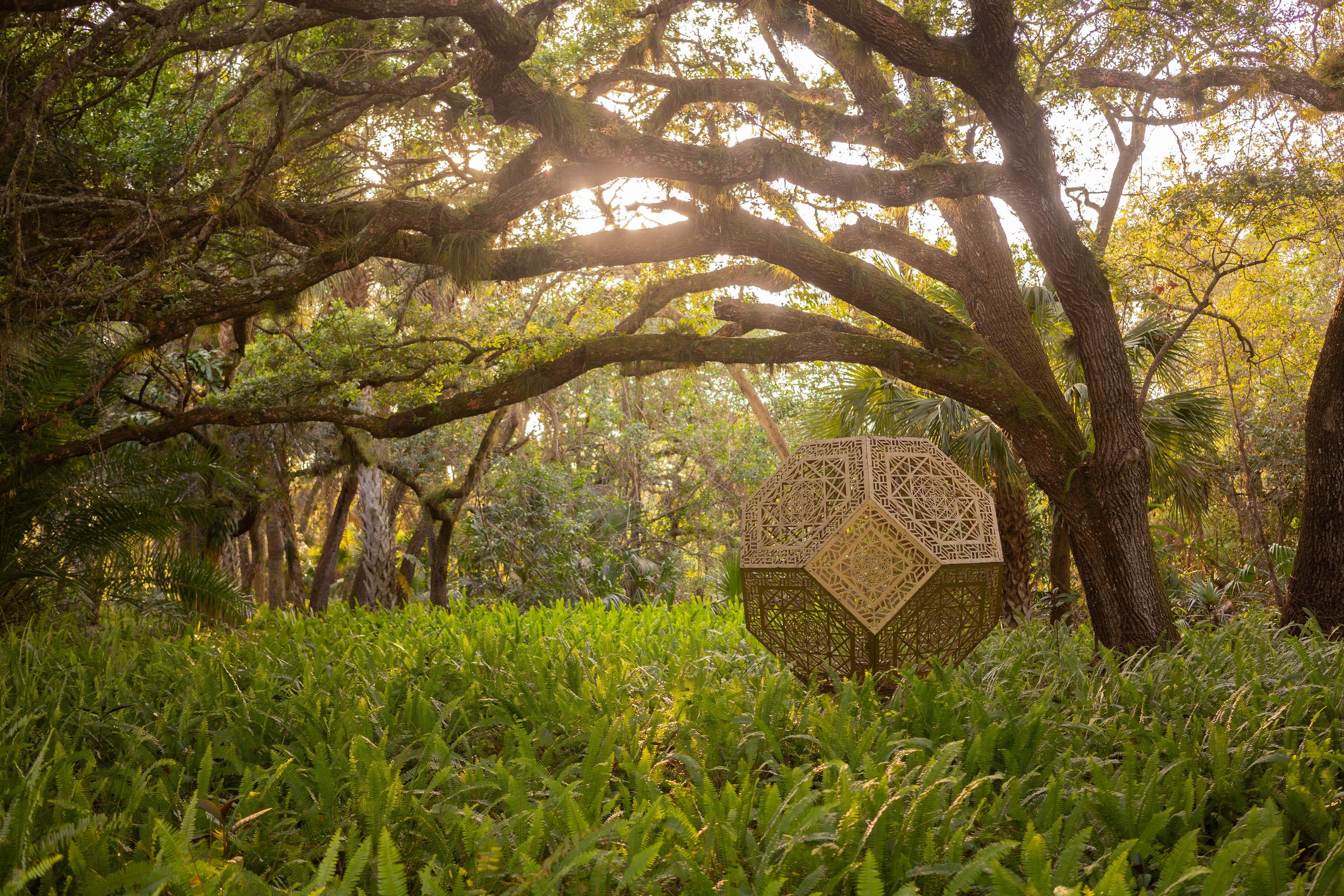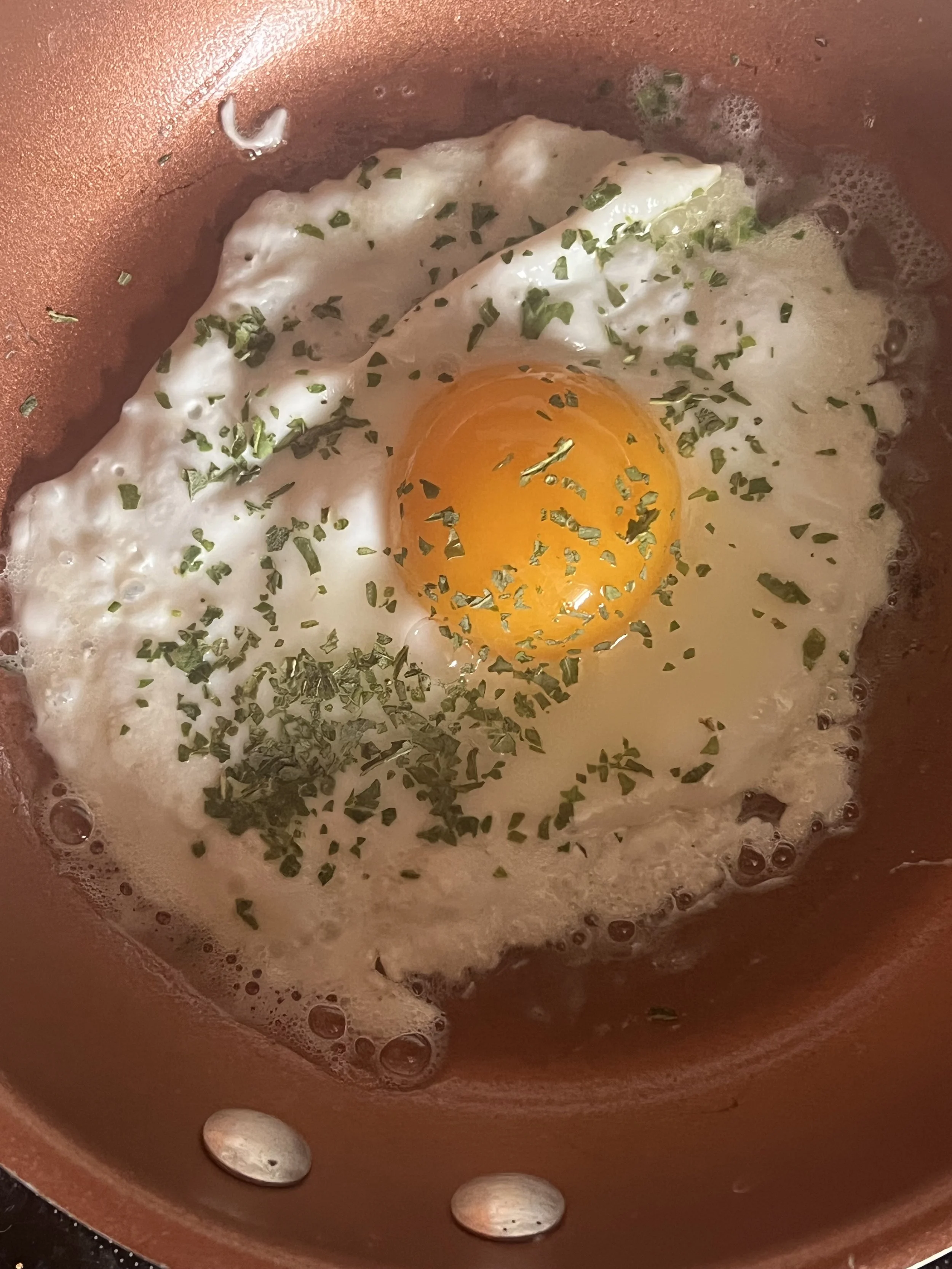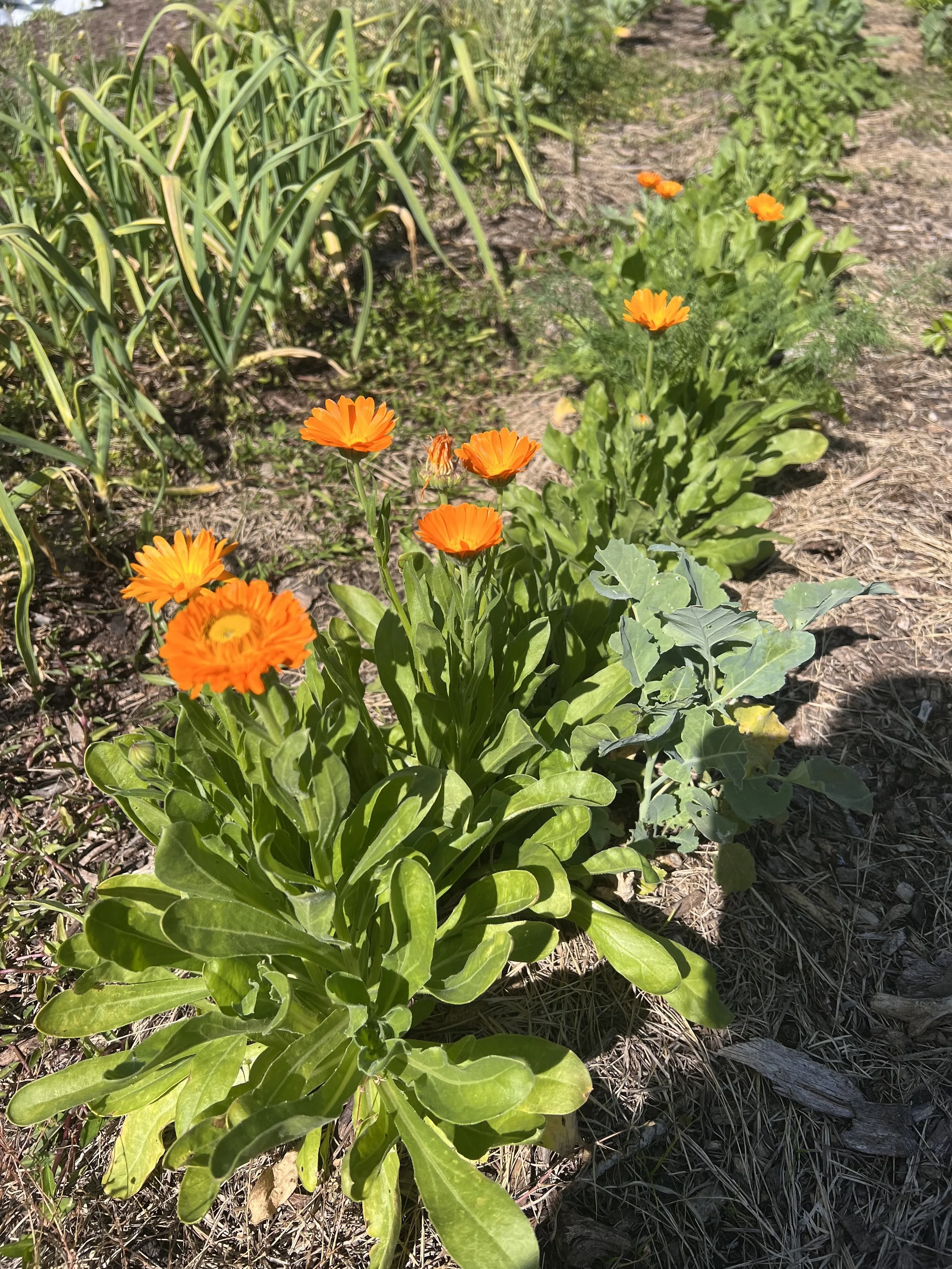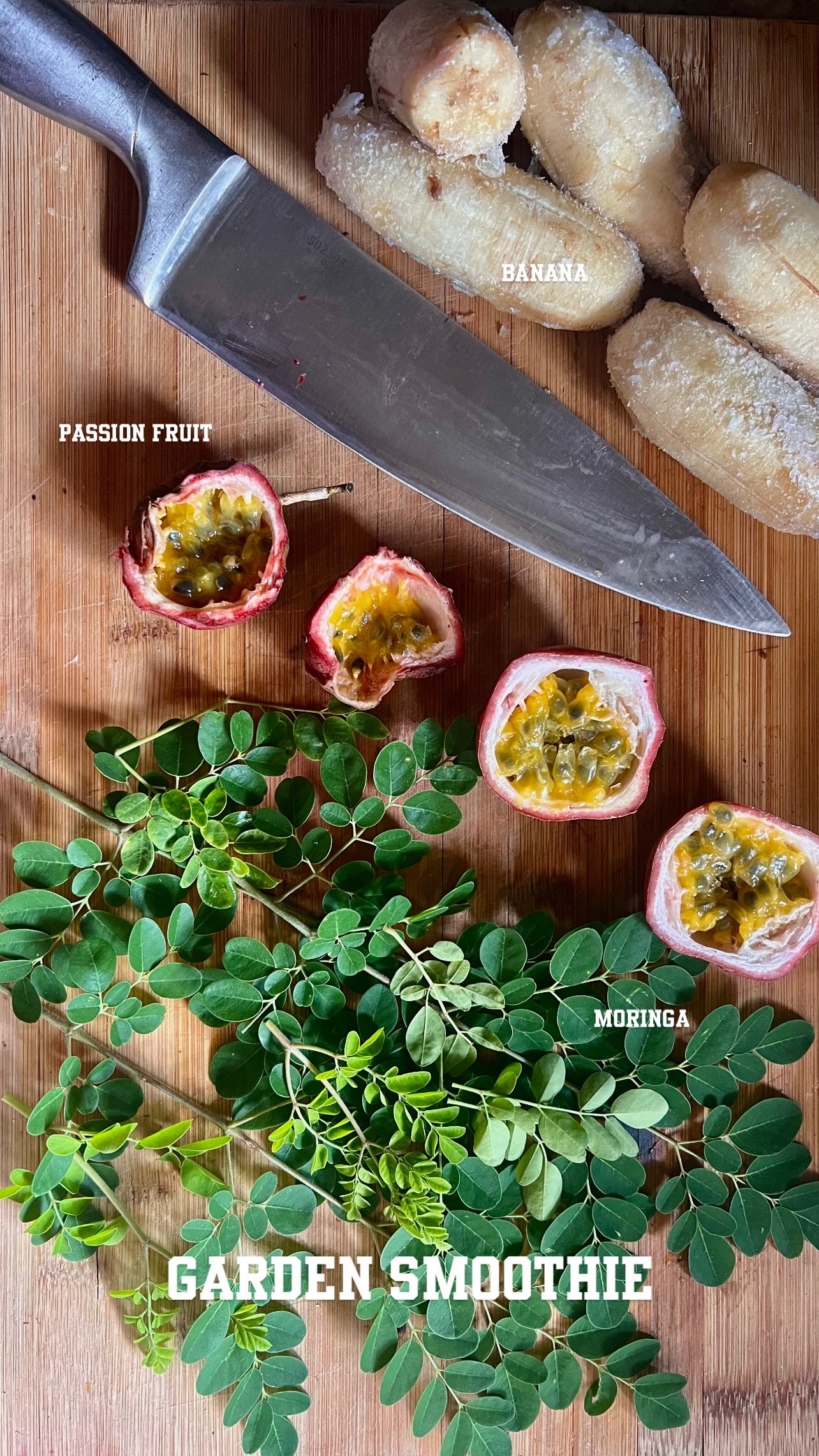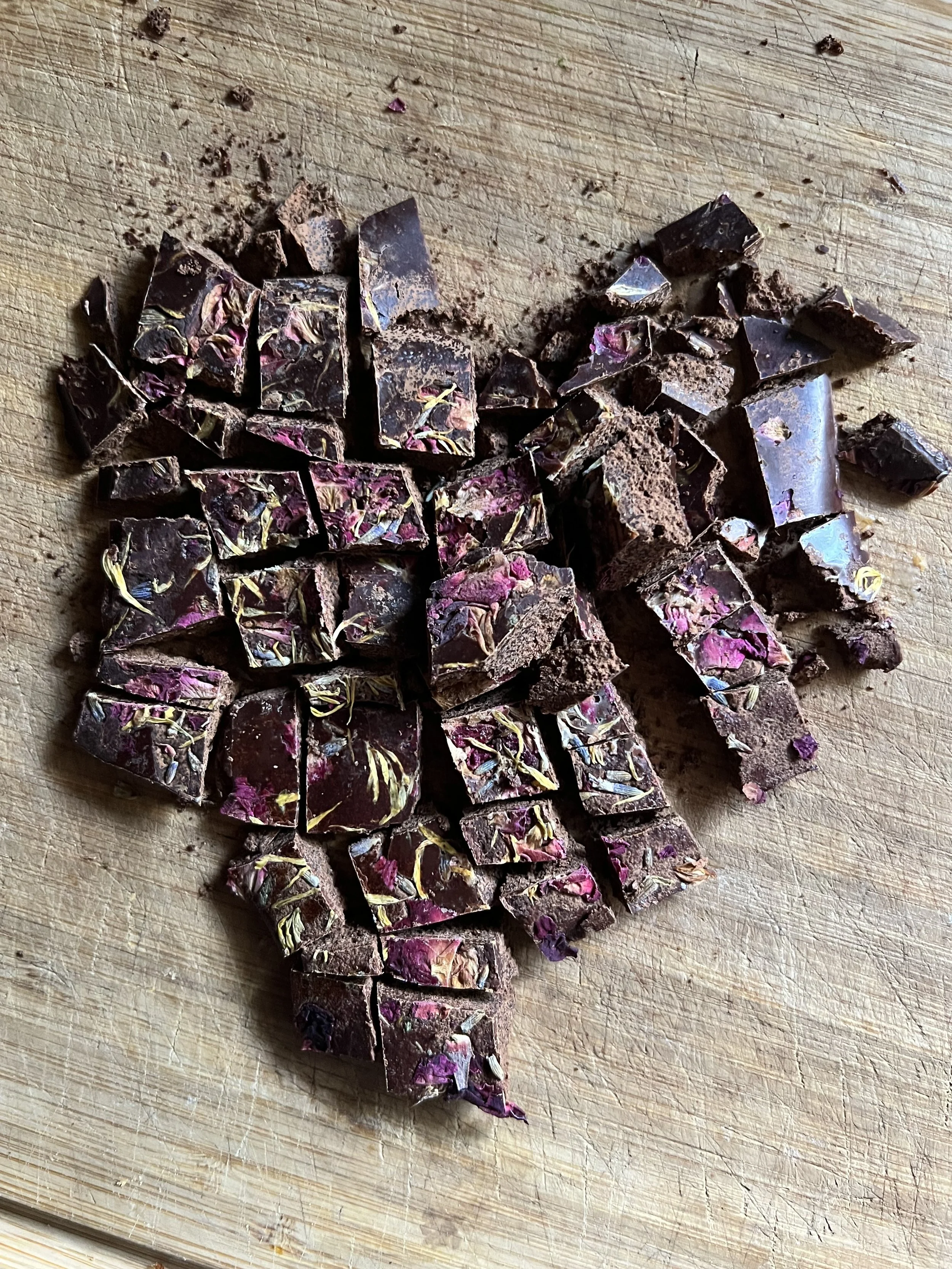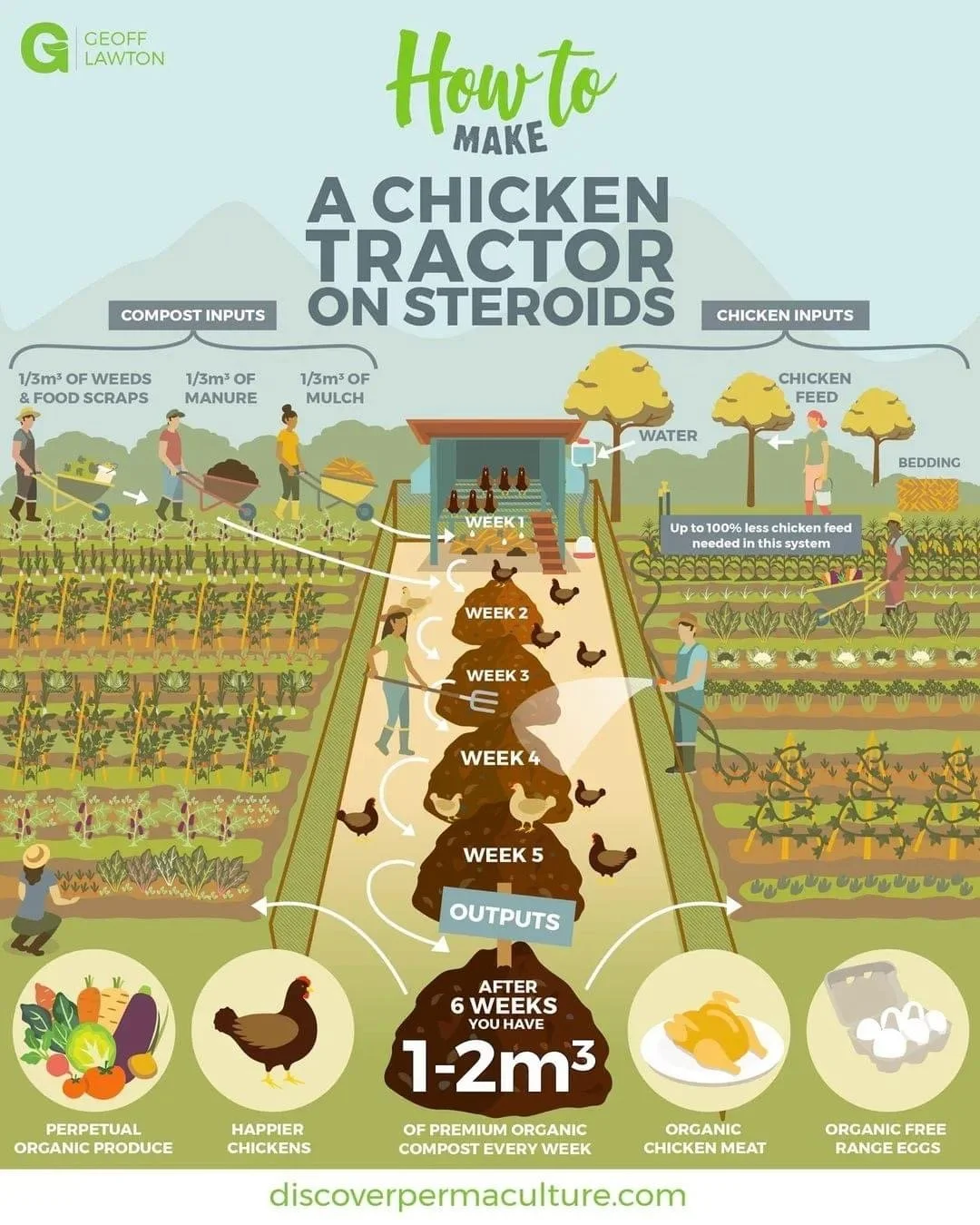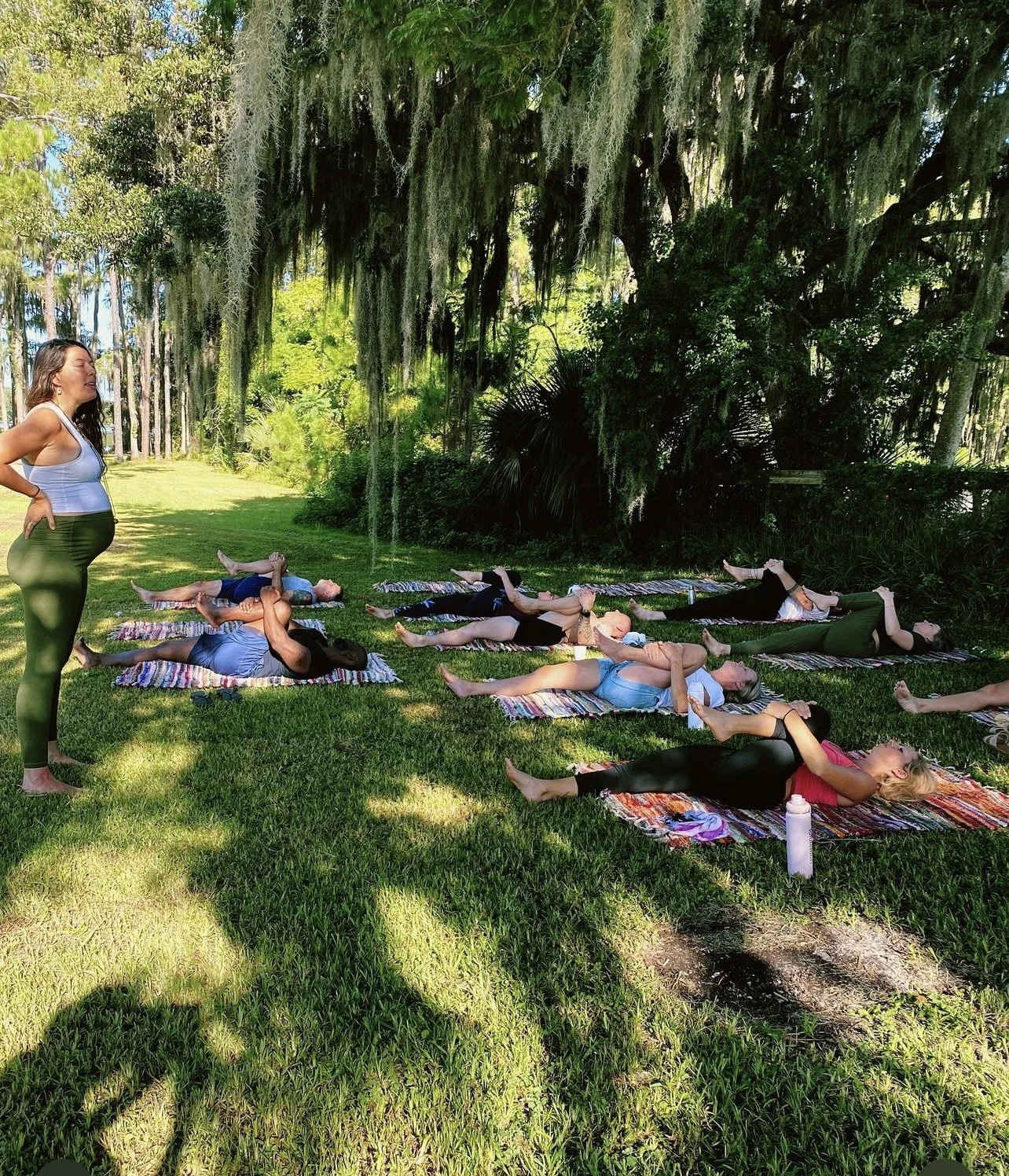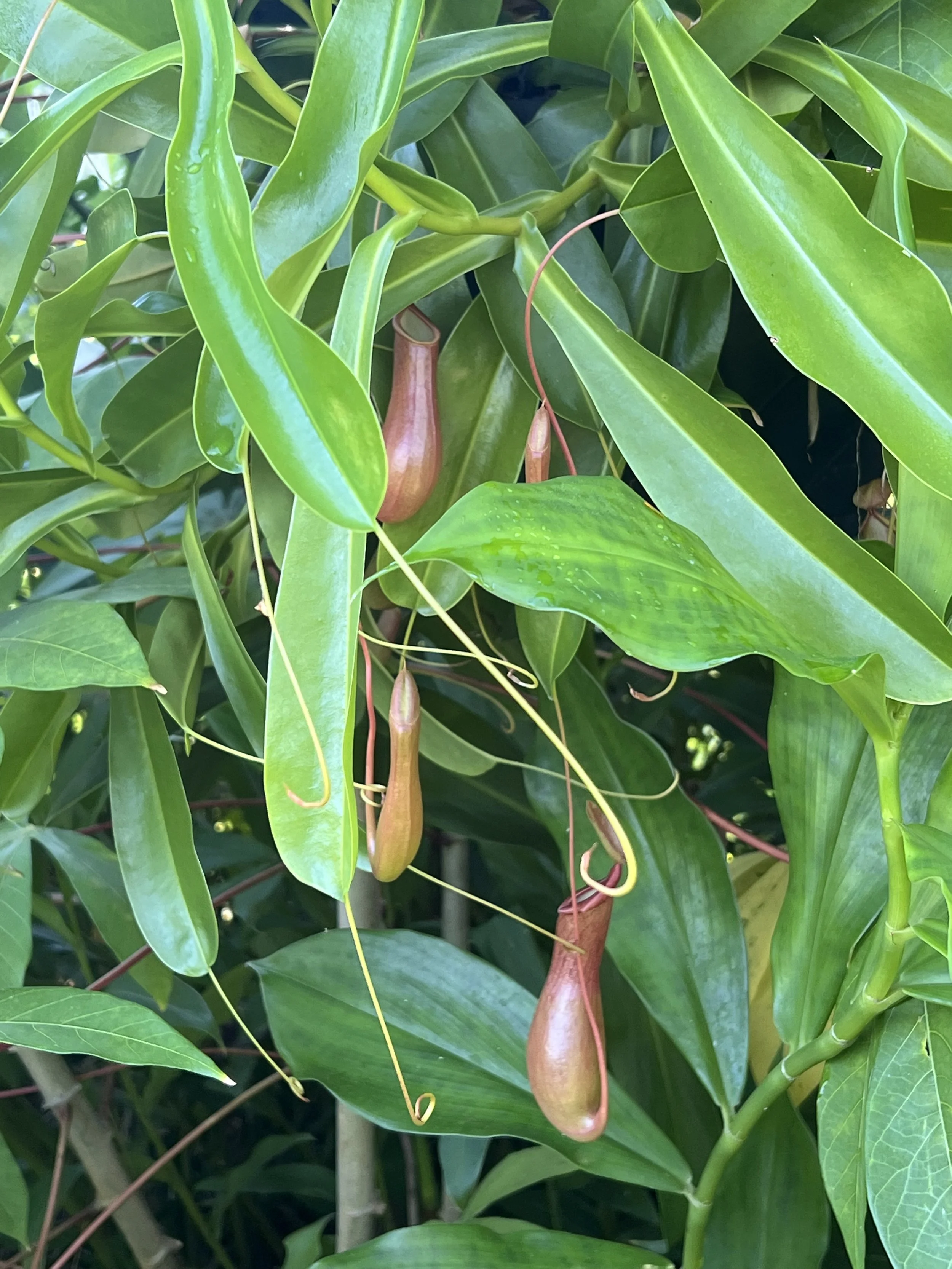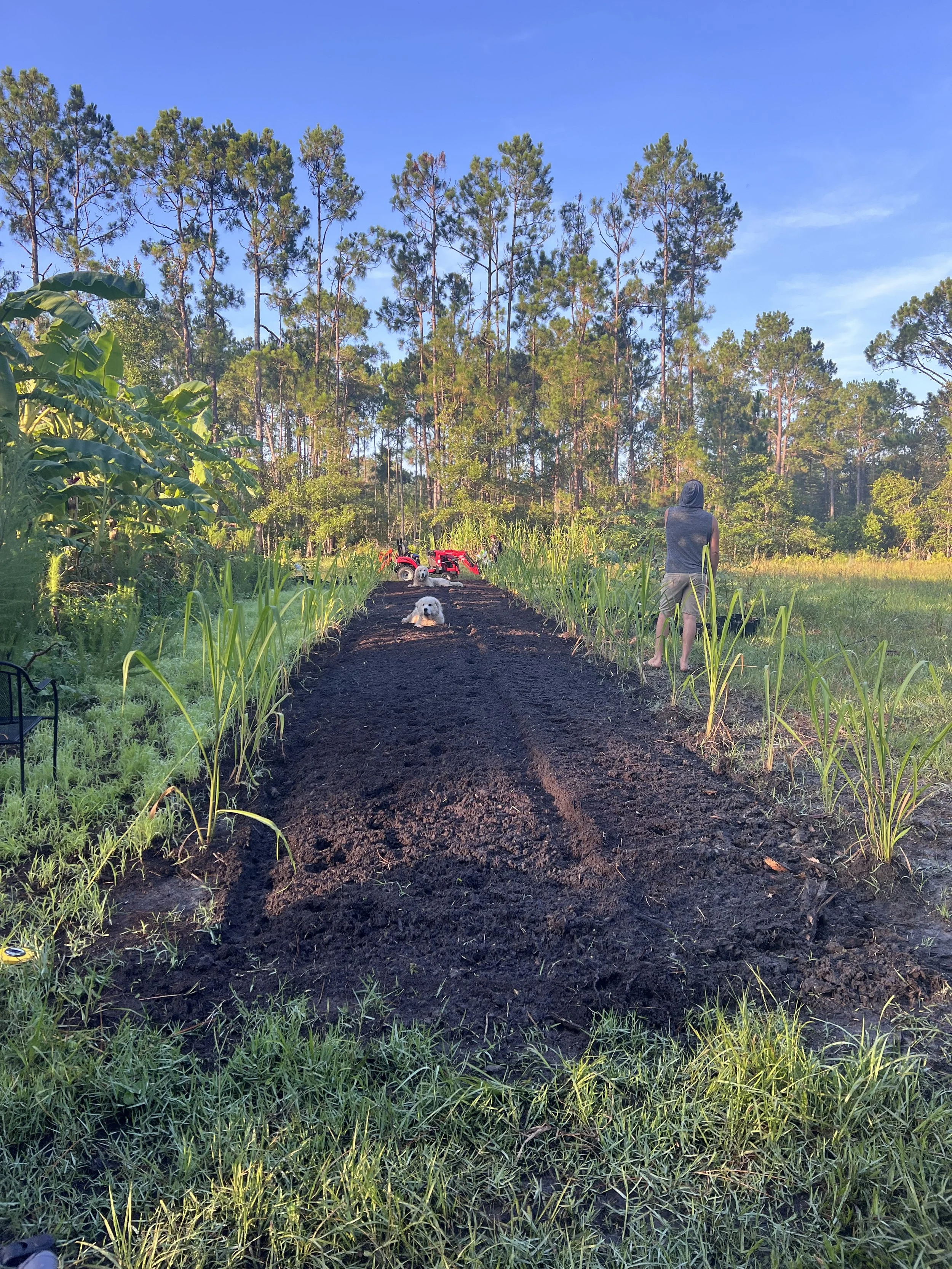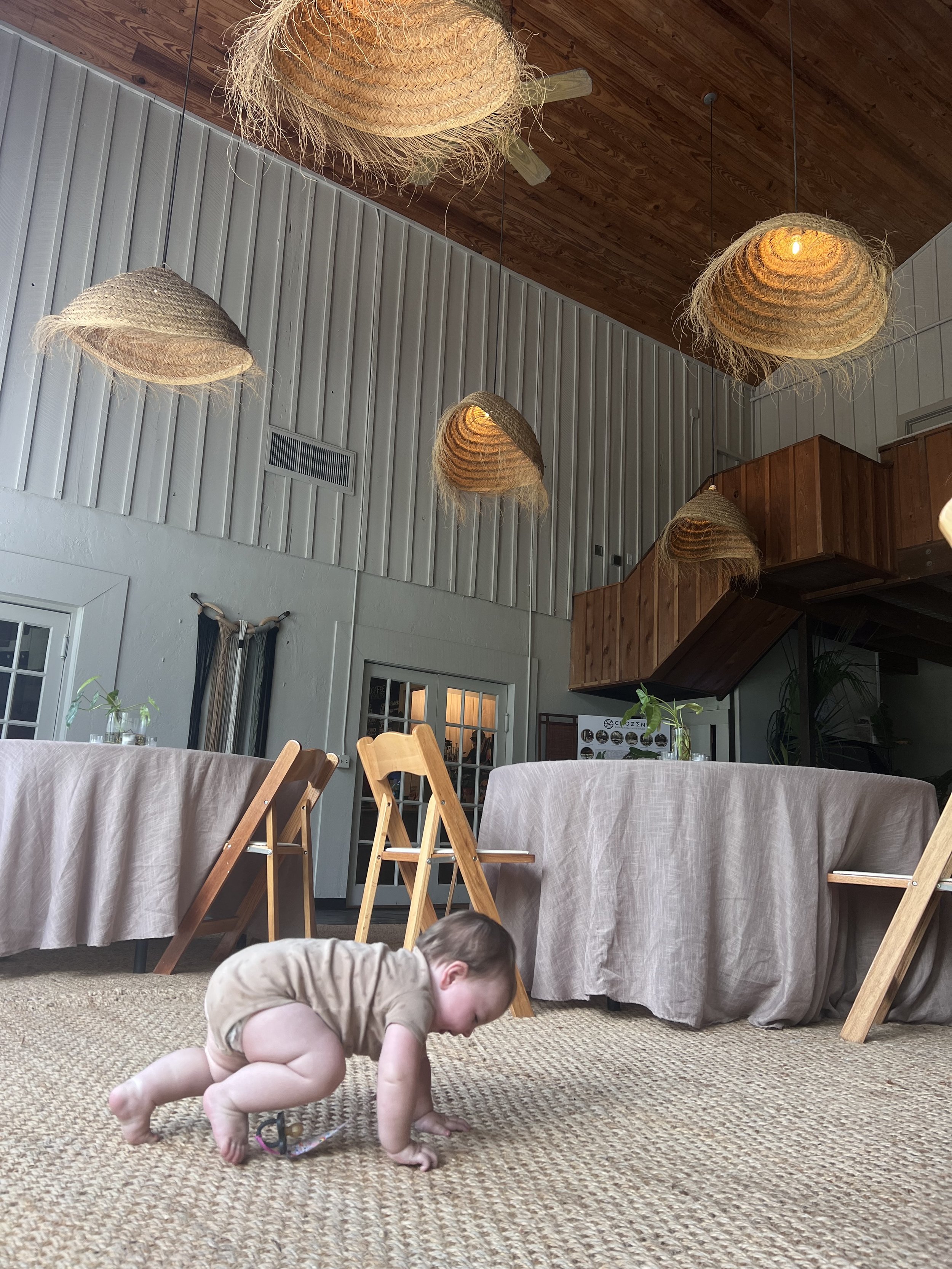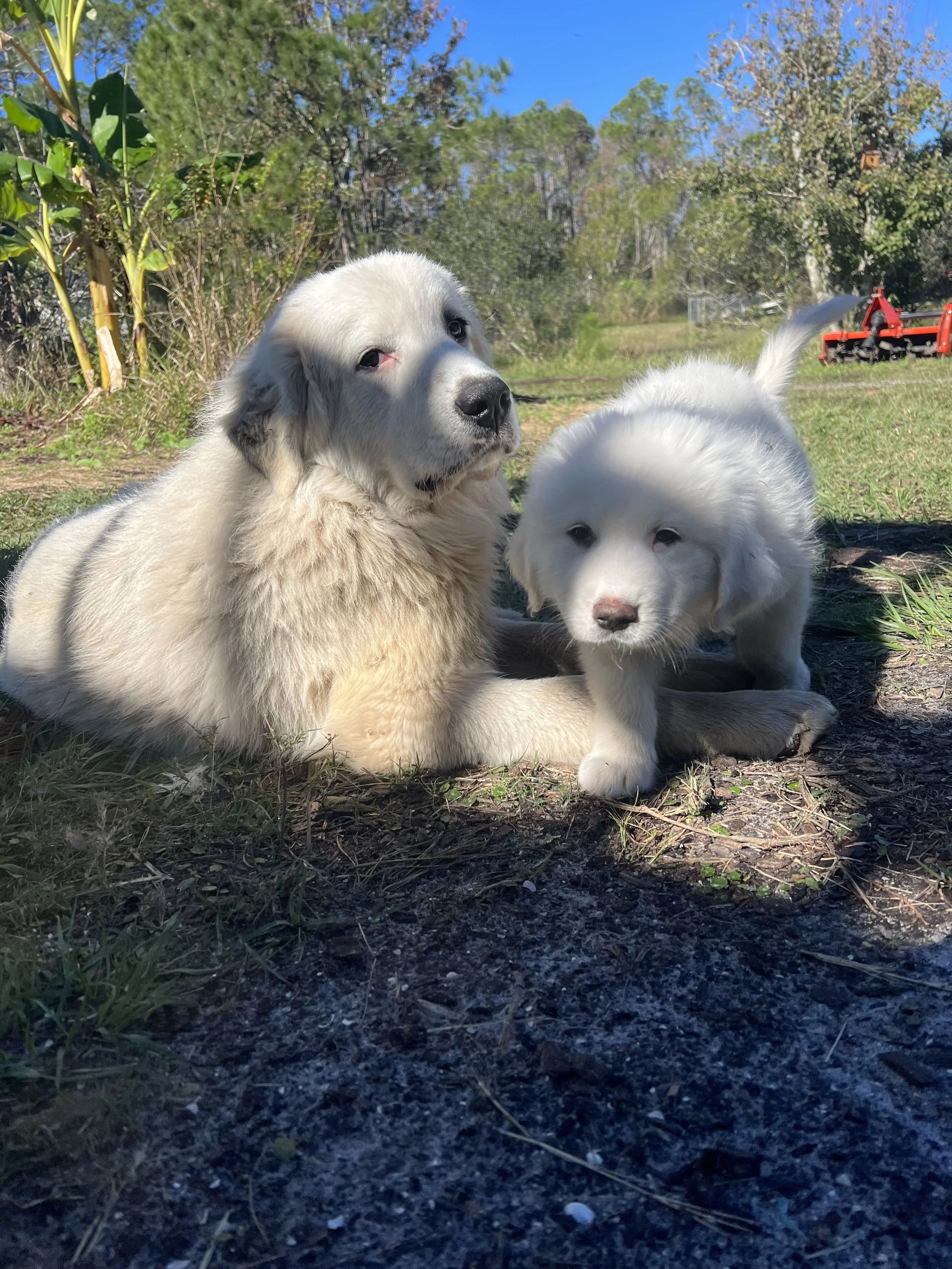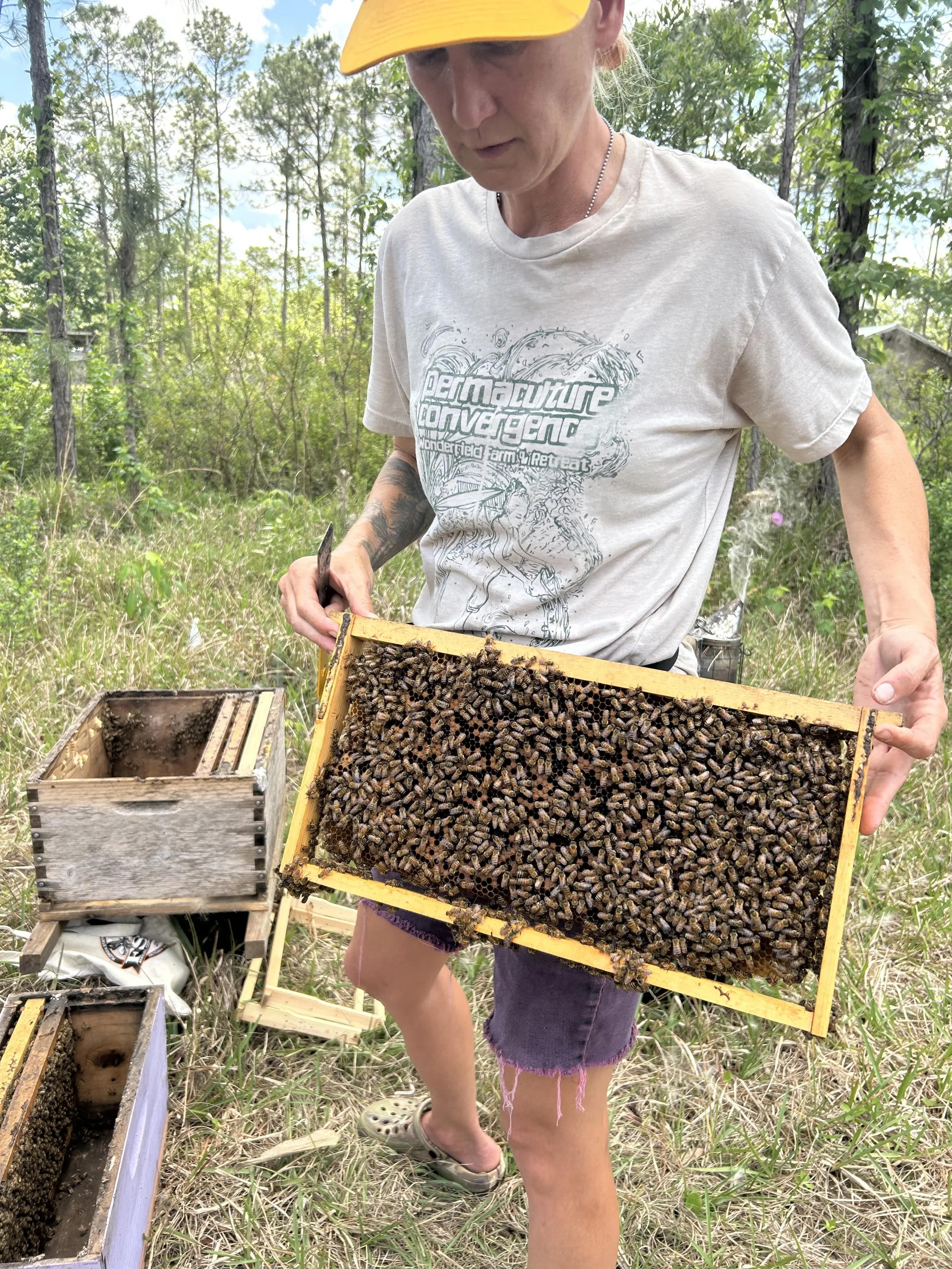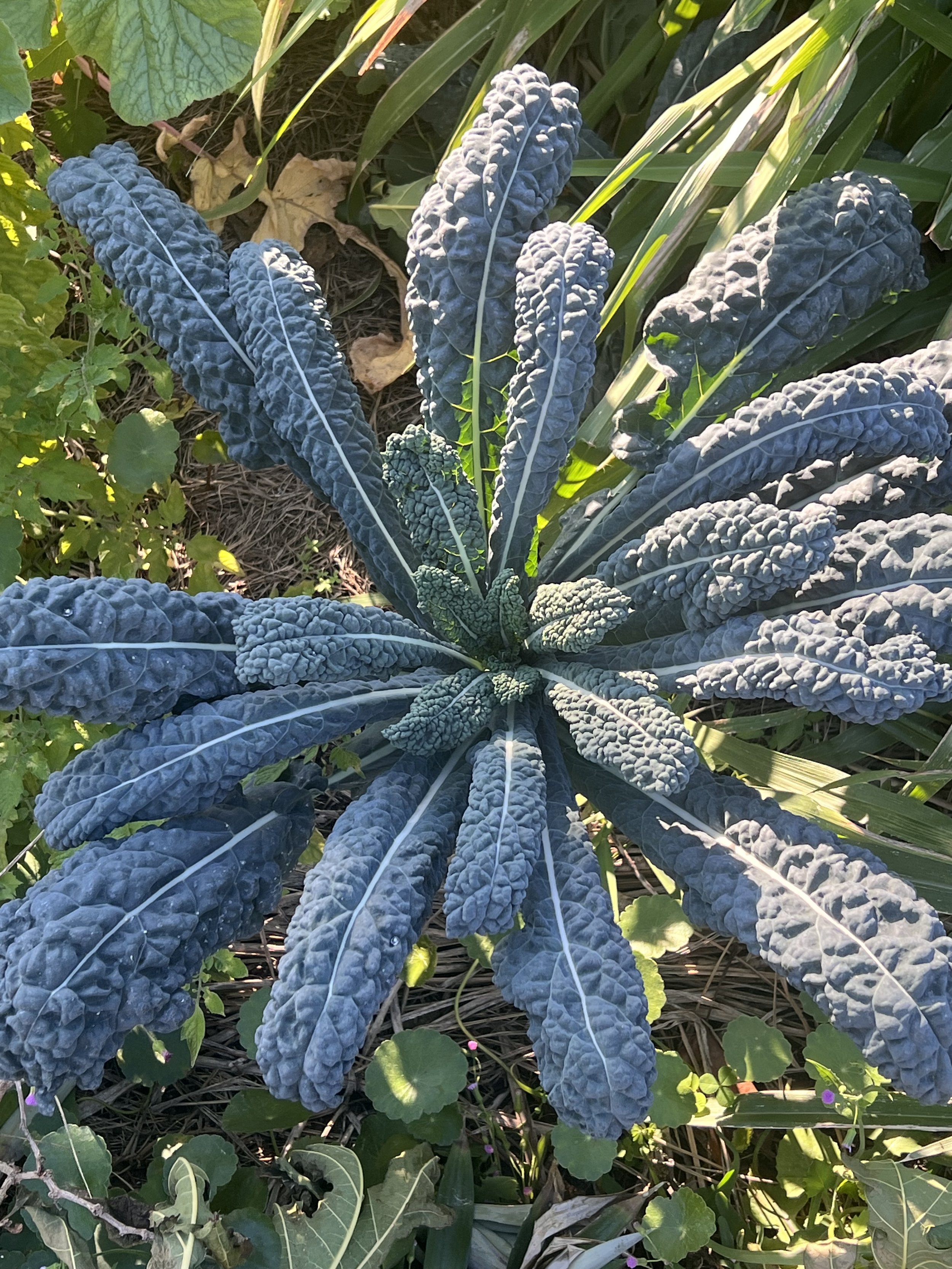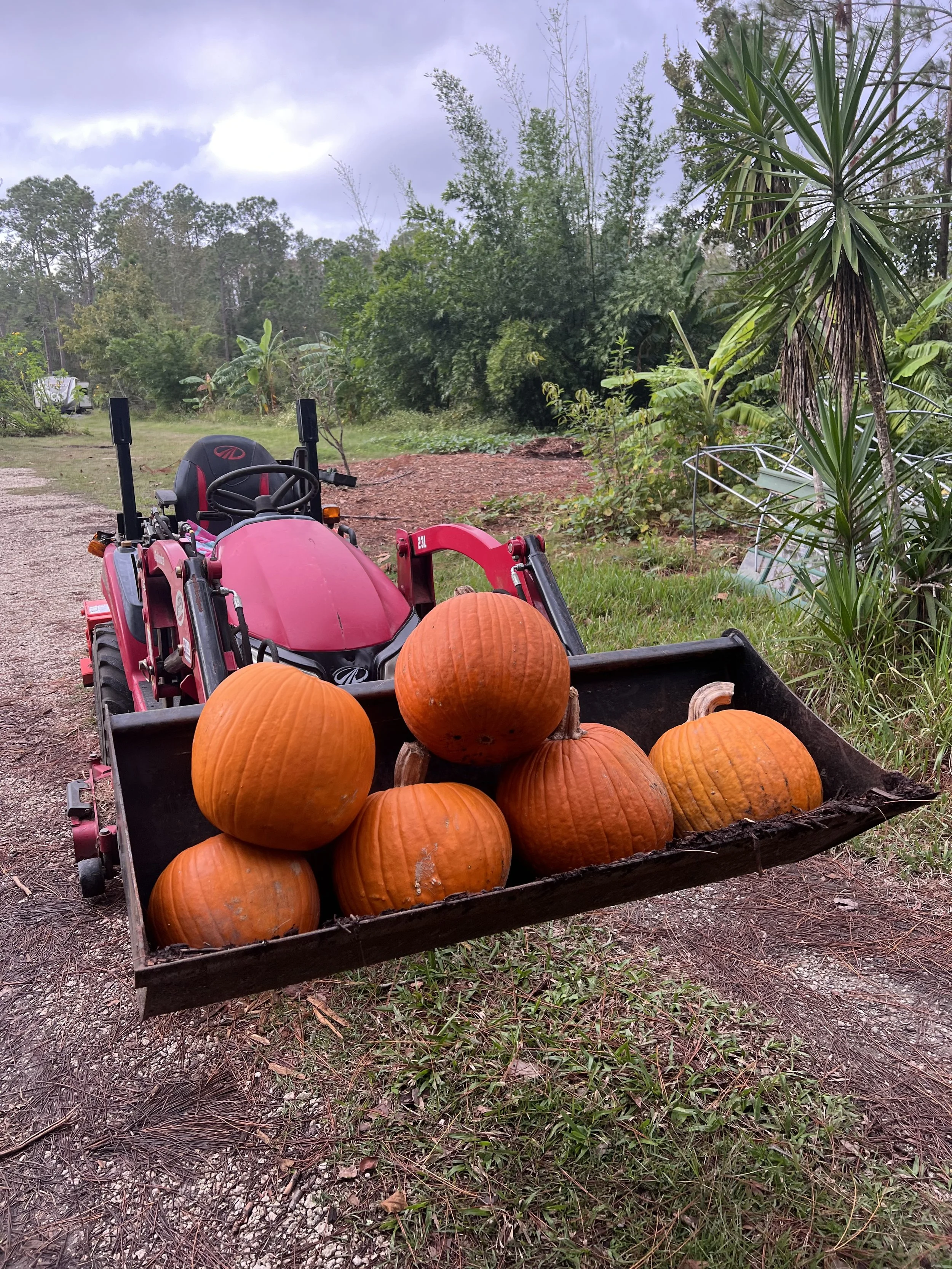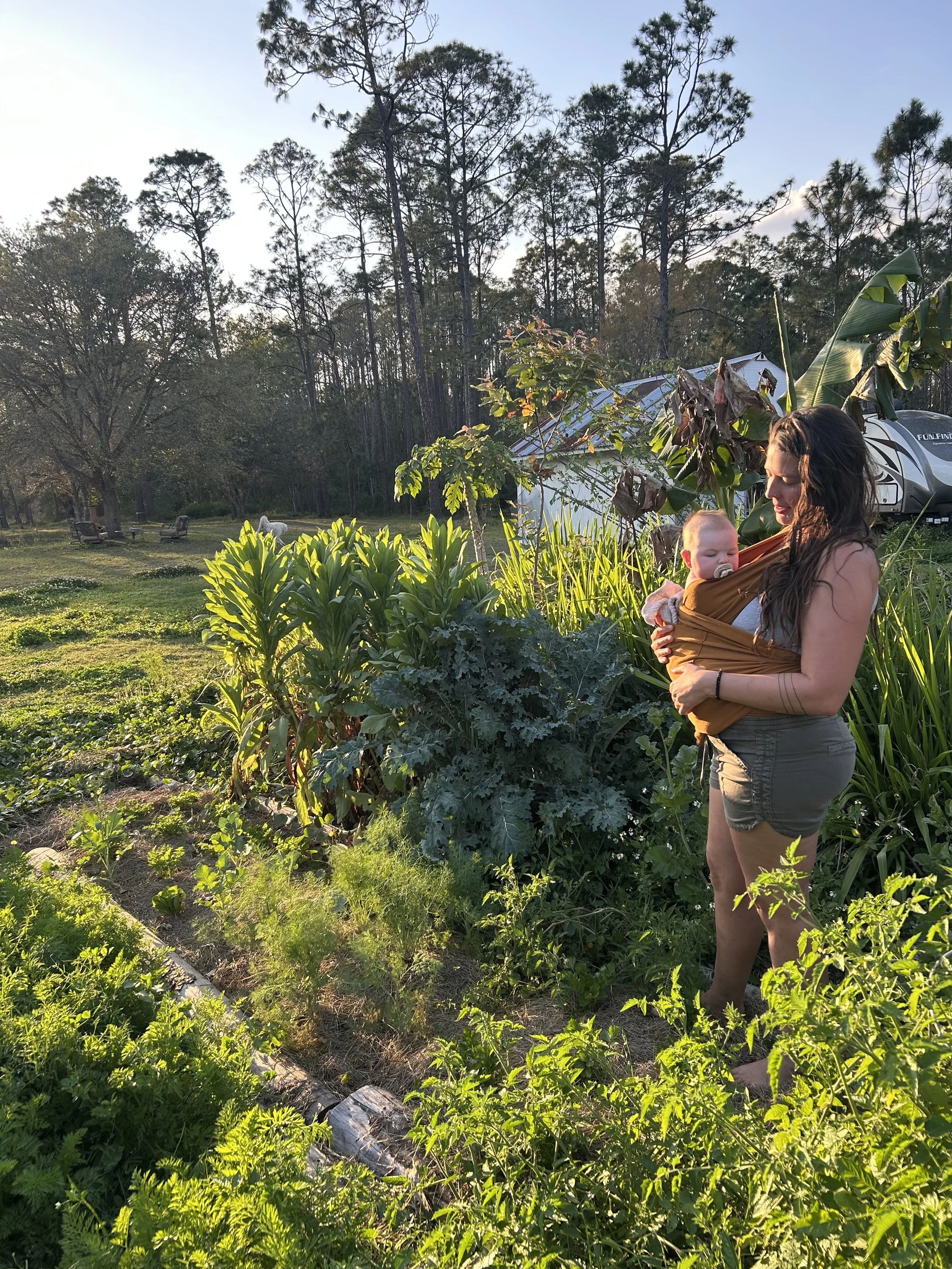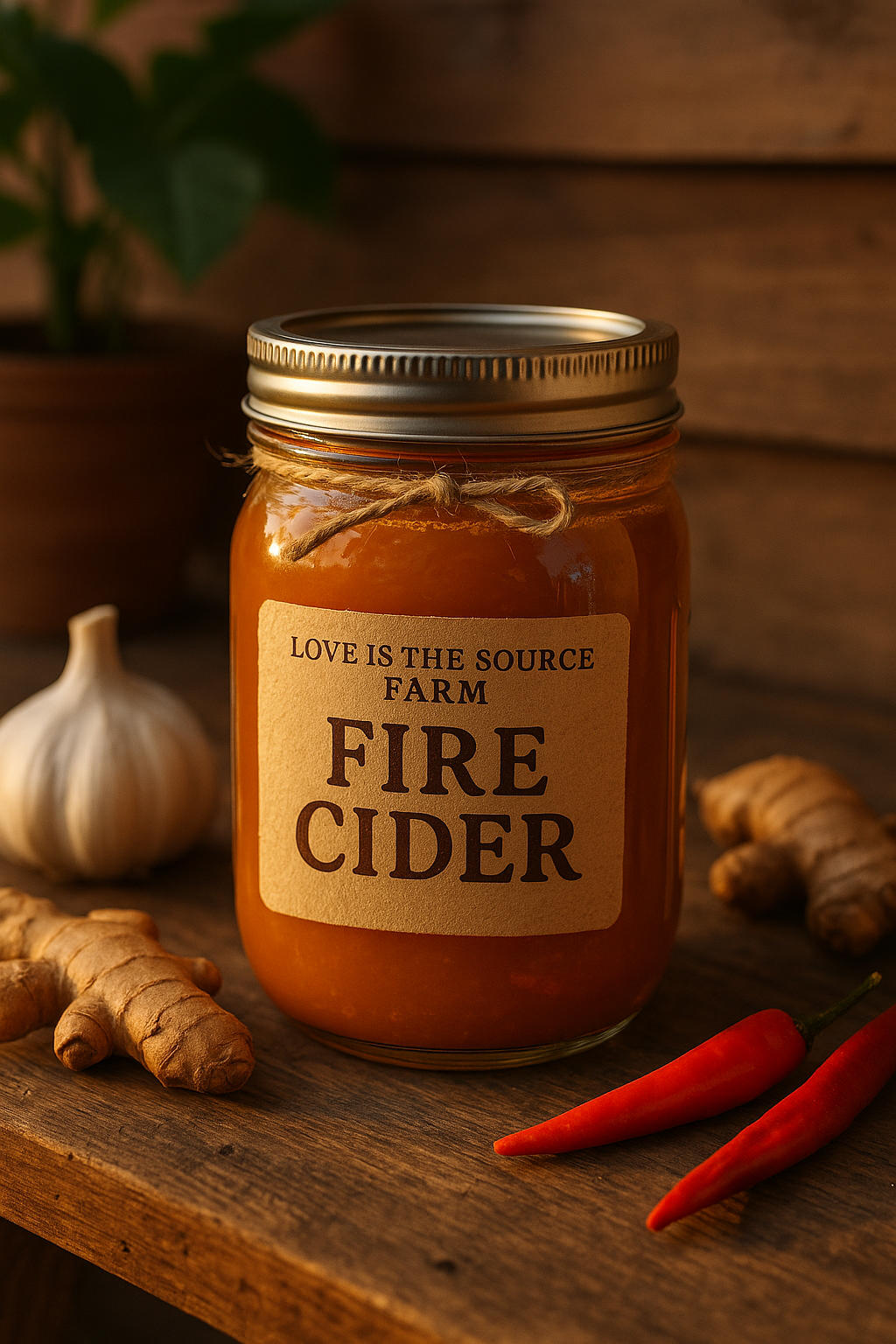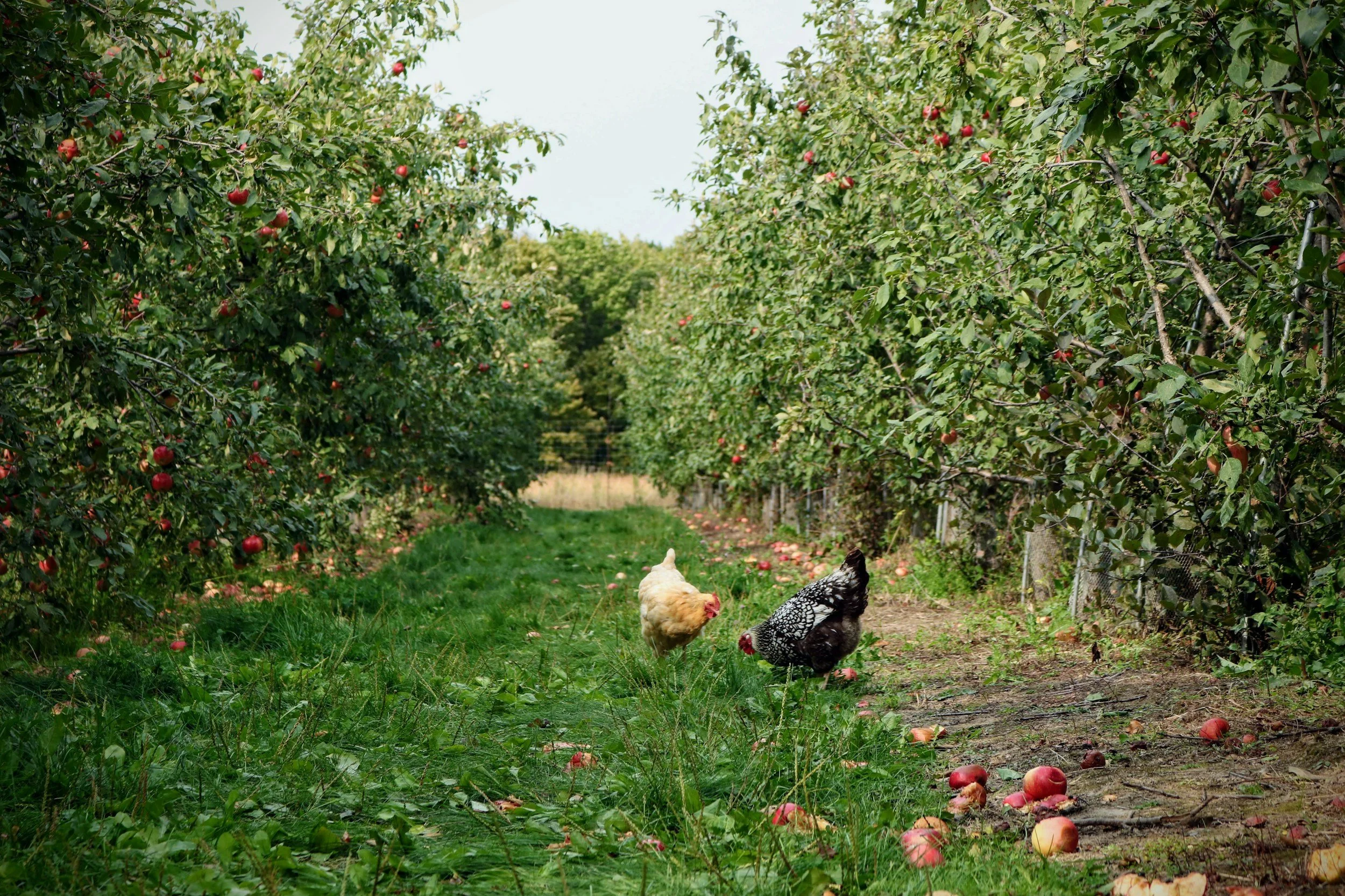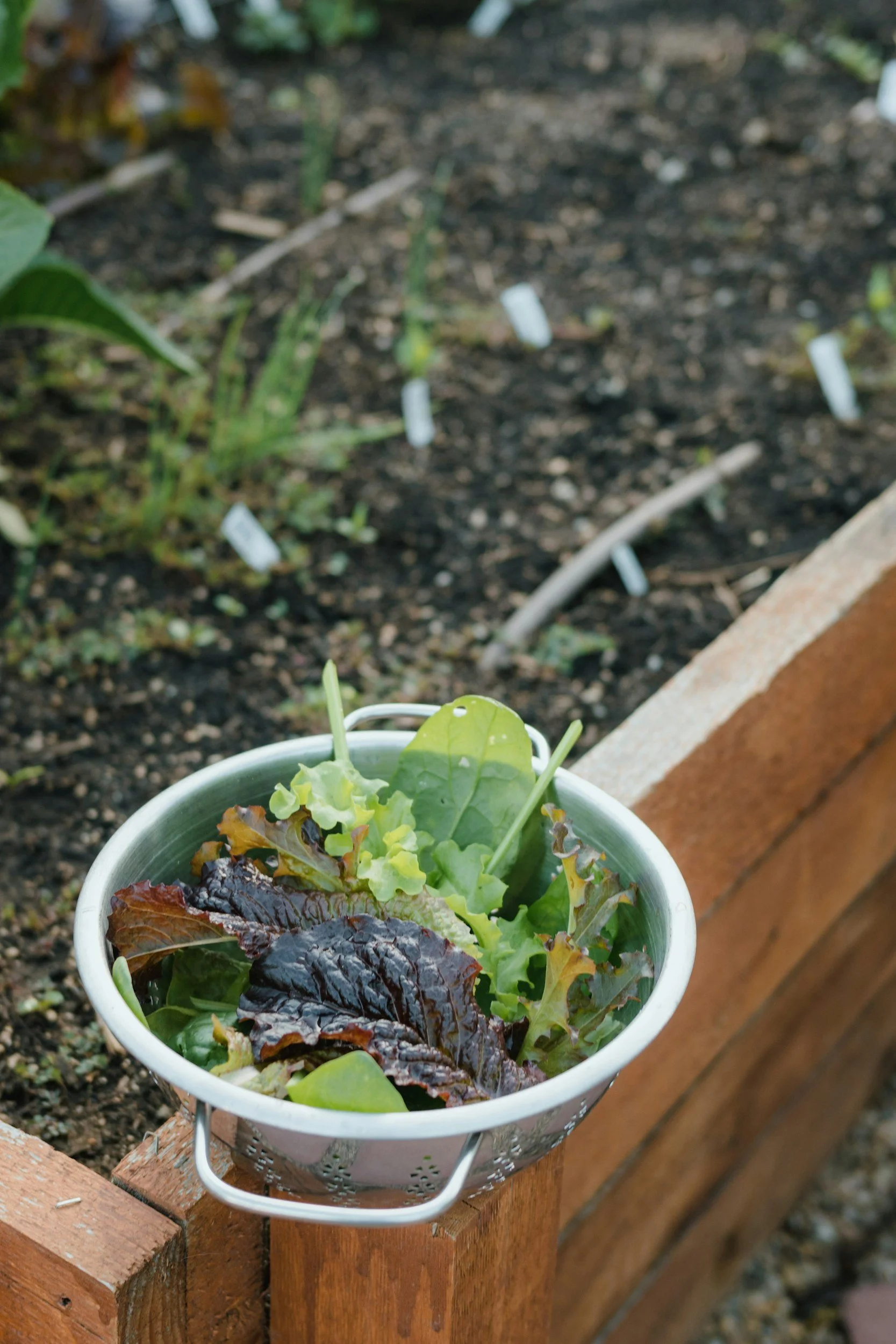Our Collab with ChoZen Retreat Center: A Sanctuary for Regenerative Living & Heart-Centered Growth
A Place Beyond Retreats — A Regenerative Sanctuary
Tucked into the lush, biodiverse landscape of Florida’s Treasure Coast, ChoZen Retreat is more than a wellness getaway. It is an eco-sanctuary, a living model of regenerative healing, and a gathering space for those who long to connect—with nature, with themselves, and with community.
On approximately 40 acres adjacent to the St. Sebastian River and bordering a 22,000-acre nature preserve, ChoZen is designed to integrate land conservation, regenerative agriculture, and human transformation into one coherent ecosystem.
Rather than merely sustaining the land, ChoZen aspires to regenerate it. Through wetland restoration, agroforestry, watershed renewal, and educational programs, their goal is to leave the land richer, healthier, and more alive than before.
Roots & Vision: Tony & Ximena Cho
At the heart of ChoZen stand Tony and Ximena Cho, co-founders and stewards of this land-born vision. Their story is woven with generational care, environmental awakening, and deep commitment to community.
Tony, in particular, has a strong personal history with this land: his grandmother founded the Kashi Ashram here in 1976. When Kashi faltered over time, Tony began acquiring and stewarding parts of that land, envisioning a future where ecological restoration, spiritual refuge, and earthly stewardship could coexist.
But this vision isn’t nostalgic—it’s forward looking. Tony describes ChoZen not as a “resort in nature,” but as a “Florida safari”—a place where people can meaningfully participate in nature, witness endangered species, walk food forests, and learn regenerative practices.
Ximena brings her own gifts: ceremony, heart-led gatherings, social impact orientation, and the capacity to weave the ritual and relational threads that allow people to feel seen, held, and transformed. Their partnership is oriented toward collective healing, not just of individuals, but of land, ecosystems, and culture.
One recent example of their commitment to collaboration and shared leadership is their partnership with namūna, where they co-hosted a “Spring Salon” to engage emergent spiritual landscapes, bridging identity, ecology, and social vision.
What Happens at ChoZen: Experience, Education & Regeneration
ChoZen offers a rich tapestry of experiences, combining wellness, nature immersion, and regenerative education. Here are some of their signature offerings:
Retreats & Immersions: From “Florida Safari Weekend Getaway” to longer soul shifting experiences, ChoZen welcomes spiritual seekers, creatives, wellness practitioners, and change-makers.
Eco-Tours & Permaculture Walks: Guests can join guided nature walks, permaculture tours, and wetland explorations. Their land includes over 3 miles of trails, food forests, native plantings, and regenerative gardens.
Farm & Soil Stewardship: ChoZen Farm runs regular volunteer days, farm education, and community gardening. They cultivate a biodiverse ecosystem, maintain gardens like the Gratitude Garden, Love Garden, Wisdom Garden, and nurture a food forest with 350+ fruit trees.
Wellness, Ritual & Gathering: Within ChoZen’s sanctuary, participants engage in breathwork, yoga, ceremonial gatherings, sound healing, community circles, and workshops in conscious leadership and relational practice.
Artisan Markets & Local Economy Activation: On the grounds, you’ll find ChoZen Artisan Markets, held regularly, offering local artisans, makers, food, and live music—bringing the regenerative model into the local economy.
ChoZen sees this work as regenerative placemaking—creating a space that models ecological balance, supports local livelihoods, and nurtures spiritual, emotional, and relational flourishing.
Love Is The Source Farm & ChoZen: Our Collaboration
When Love Is The Source Farm and ChoZen joined forces, it felt like a natural alignment of values, vision, and purpose. Here’s how our work together weaves into the larger fabric of regenerative wellness:
Hosting the Source Immersion Retreat
Love Is The Source hosts immersive retreats at ChoZen—offering yoga, breathwork, cacao ceremony, live music, and farm-to-table meals drawn from ChoZen’s own regenerative gardens.
These retreats strive to reconnect guests with the land, invite deep inner restoration, and ground spiritual practices in the ecology of Florida.Ecological Synergy & Shared Stewardship
In working with ChoZen, Love Is The Source contributes to and benefits from ChoZen’s regenerative infrastructure—soil health, food forests, agroecology, and biodiversity. We see this not just as backdrop, but as part of what guests participate in.Mutual Community Cultivation
Both our organizations care about building relational, heart-centered communities. Together, we help bring breath, ceremony, movement, love, and nature-based wisdom into dialogue—and create space for others to step into that.Growing a Regenerative Narrative
In combining retreat, farm, ecology, wellness, and relationship, we are co-creating a living example of how modern life can re-ground itself in earth wisdom. Your experience isn’t only internal—it’s relational, ecological, and generative.
Why This Matters
In a time when many retreat centers are “luxury escapes” removed from their environment, ChoZen insists that the land must be part of the medicine. Healing humans apart from Earth is incomplete. The land, the water, the soil, the flora and fauna—they’re not stage dressing; they are active participants.
By holding that posture, ChoZen offers more than rest or escape—they offer re-engagement, remembrance, and co-evolution. And in collaborating, Love Is The Source helps bring that model into new rhythms, new hearts, and new stories.
Invitation
If you’ve ever felt the pull to slow down, to recalibrate your inner compass, to step into deeper connection—with yourself, with others, and with the land—then ChoZen and Love Is The Source welcome you.
Join us at The Source Immersion Retreat, explore ChoZen’s trails and gardens, and tap into a sense of possibility for how we can live, love, heal, and regenerate—together.
Why We Eat the Way We Do 🌿
At home, we aim to eat three wholesome meals a day — all gluten free, low dairy, seed oil free, sugar free, dye free, preservative free, and organic whenever possible. It’s not about perfection or restriction; it’s about feeling good, living simply, and knowing where our food comes from.
Over the years, we’ve slowly shifted from depending on grocery stores to growing and creating more of what we eat right here on the farm. From eggs and honey to herbs, fruits, and vegetables — our land feeds us in more ways than one. Every season, we find ourselves buying less and less, and instead reconnecting more deeply to the process of cultivating and preparing our food from the ground up.
We make almost everything from scratch — sauces, dressings, spices, even our own gluten-free flours. It’s a labor of love, but one that’s worth every bit of effort. Food tastes different when you’ve had a hand in growing it, and it nourishes more than just the body — it feeds the spirit, too.
Of course, we still love a good meal out! Cory’s weakness is authentic Mexican food, and Hannah will never pass up a beautifully plated farm-to-table fine dining experience. But day to day, our kitchen is where the magic happens — a reflection of our values, our health, and our connection to the land we call home.
Why Growing Your Own Herbs and Making Your Own Medicine Is More Powerful Than Store-Bought Supplements 🌿
There’s something profoundly empowering about stepping outside your door, harvesting a handful of fresh herbs, and creating your own medicine. It’s a quiet act of remembrance — a return to the way our ancestors cared for themselves and their families long before health came in capsules and plastic bottles.
Store-bought supplements may be convenient, but they can never compare to the vitality, integrity, and spirit of plants you’ve nurtured with your own hands. When you grow your own herbs, you’re not just cultivating a garden — you’re cultivating a relationship. You learn each plant’s rhythm, its preferred soil and sunlight, its scent when crushed between your fingers, its taste when brewed into tea. That intimacy carries an energy you simply can’t buy.
A Lineage of Earth Wisdom
Throughout history, every culture has relied on the intelligence of plants. Ancient traditions like Traditional Chinese Medicine, Ayurveda, and homeopathy all root their systems in the understanding that the body mirrors nature — and that balance, not suppression, is the key to healing.
In the kitchen, what we now call herbalism was once just common sense. Garlic, ginger, turmeric, cinnamon, rosemary, and mint were staples not only for flavor but for wellness — preventing illness, aiding digestion, and supporting immunity. The kitchen was the first apothecary, and the garden was the original pharmacy.
The Heart of Kitchen Herbalism
Here on the farm, we’ve woven these timeless practices into our daily life. We grow our herbs alongside our food — moringa, turmeric, holy basil, lemongrass, oregano, mint, chamomile, rosemary, and sage — using them in meals, teas, tinctures, and salves. It’s not about chasing trends or complicated protocols; it’s about returning to simplicity.
By working with the plants themselves — in their whole, living form — we receive medicine that is complete and synergistic. Every compound, every essence works in harmony. Unlike isolated extracts or lab-made vitamins, these medicines carry the intelligence of nature — living, breathing, and connected to the same soil that sustains us.
Growing Medicine, Growing Awareness
Making your own medicine is more than an act of self-reliance; it’s an act of reverence. It teaches patience, attentiveness, and gratitude. It reminds us that healing doesn’t come from control — it comes from relationship.
And in that relationship, we rediscover something that can’t be bottled or branded: the knowing that we are part of the medicine, too.
Why Wild Foraging and Growing Your Own Food Is the Healthiest Thing You Can Do
Wild forage and growing your own food!
There’s something sacred about walking barefoot through your land, reaching down, and harvesting food that grew right where you live. A tomato warm from the sun. A handful of wild greens after a summer rain. The medicine that nature offers us for free has a vitality you can’t find in any store — not even the fanciest health market.
Reclaiming Connection to the Source
When you grow your own food or forage from the wild, you’re connecting directly to the intelligence of the earth. Each plant carries the energy of the soil it came from, the rhythm of the seasons, and the nutrients perfectly attuned to that ecosystem. When we eat food grown on our own land, our bodies are nourished by the same minerals, microbes, and elements we breathe and touch every day.
That means your immune system is strengthened by the exact environment you live in. Your microbiome becomes more resilient. Your nervous system calms. You begin to feel more grounded and alive — because you are literally eating the place you belong to.
The Problem with Store-Bought “Health”
Even the most beautiful produce aisle is often filled with lifeless food. Harvested early, shipped thousands of miles, sprayed, packaged, and stored — by the time it reaches your plate, it’s lost much of its nutrient density and spirit. The vitamins fade, the enzymes die, and the natural life force that once pulsed through that plant has been traded for convenience.
When you grow or forage your food, there’s no middleman. You pick it at its peak, and that freshness translates to vibrant color, deeper flavor, and unmatched nourishment.
The Wild Knows What You Need
Wild foods are nature’s multivitamin. They contain higher levels of minerals, antioxidants, and phytochemicals than most cultivated plants — simply because they haven’t been bred for shelf life or sweetness. Dandelion, plantain, purslane, amaranth, moringa — all grow freely here in Florida and are packed with nutrients your body intuitively craves.
Our ancestors understood this well. They foraged daily, not just for survival but for vitality. Every plant they consumed was a living teacher, guiding them in rhythm with the land and the cycles of nature.
Growing Food Is Revolutionary
To grow your own food — even a few herbs on your porch — is to reclaim power in a world that profits from our disconnection. It teaches patience, observation, reciprocity, and gratitude. It reminds us that food isn’t just something we consume — it’s something we participate in.
On our farm, we’ve watched this transformation happen again and again. A child harvesting their first carrot. A volunteer discovering that weeds can be dinner. A family sharing salad made entirely from what they grew together. It’s medicine for the body, mind, and spirit.
How to Begin
You don’t need a full farm to start.
Begin by identifying a few edible plants that grow wild near you — chickweed, violet, or dandelion are often first friends. Start a compost pile, plant herbs you actually use, and tend the soil with love. Learn from the land, let curiosity guide you, and taste your world one leaf at a time.
The more you connect with your food at the source, the healthier and more whole you become. Because the truth is simple: when we eat from the earth, we remember who we are.
Connect to Ceremonial Cacao
Cacaoooooo
A sacred invitation to open your heart and return to the source of love.
The first records of cacao being consumed in sacred ways date back between 4,000 and 6,000 years ago. We have the earth’s intelligence—and the ancient civilizations of the Aztecs and Mayans—to thank for carrying these traditions forward. For thousands of years, human beings have prayed, nourished, and gathered with this plant as a bridge to the divine.
Stories from early tribes tell how cacao was discovered and why it became known as “the fruit of the gods.” Many believe it was a gift from the heavens—offered to humanity as a way to heal, to infuse life with more loving energy, and to guide communities back into harmony with Mother Earth.
The Spirit of the Plant
Cacao often calls to us in moments when we’re ready to receive more love and nourishment—physically, spiritually, or emotionally.
It’s a gentle yet powerful teacher, one that invites us to lean into its expansive frequency and allow its medicine to move through us.
This plant is known to open the heart and awaken deeper connection—whether that’s connection to yourself, another person, or the living world around you.
Chocolate vs. Ceremonial Cacao
What most of us recognize as chocolate is far removed from cacao’s pure form.
Ceremonial-grade cacao is grown, harvested, and processed with deep care so that its full spiritual and physical properties are preserved. It is unrefined, stone-ground, and handled with reverence from seed to cup.
Because of that, it retains a powerful heart-opening effect, while delivering an abundance of nutrients that support the brain, body, and emotional well-being.
The Science of the Sacred
Cacao is not only spiritually potent—it’s physiologically remarkable.
It helps dilate blood vessels, improving circulation and oxygen flow, while also lowering blood pressure and uplifting mood.
Rich in antioxidants, magnesium, zinc, copper, and iron, cacao also contains Theobromine—a natural compound often called the bliss molecule. This compound triggers the release of serotonin, dopamine, and phenylethylamine, creating feelings of joy, openness, and connection.
Cacao is one of the few plants known to deliver its nutrients through all twelve systems of the body, reaching both the heart and the brain. With intention and attention, you can even direct where you wish its energy to go—designing your own inner experience.
Working With Cacao in Reverence
Cacao is not just a drink—it is a sacred relationship.
When you choose to work with this plant, remember the reciprocity it teaches. Honor the earth, the farmers, and the indigenous wisdom keepers who tend this lineage.
Creating rhythm and mindful practice around cacao can deepen your relationship with it—but so can taking time to step back and integrate. True connection comes from balance and awareness.
Begin each experience by cultivating gratitude.
Thank the land and the hands that brought this medicine to you. Then, set a clear intention—what do you wish to feel, release, or invite?
Blending with Other Plants
Cacao is an amplifier—it expands whatever energy or plant it meets.
That’s why many people enjoy combining it with herbs and spices like cinnamon, rose, chile, or adaptogens. When paired intentionally, cacao enhances the vibration and effectiveness of these allies, weaving them into a unified offering.
Choosing Your Source
The integrity of your cacao matters.
Always choose ceremonial-grade, fair trade cacao that supports regenerative farming and honors the people and lands who grow it.
High-vibrational cacao doesn’t just nourish your body—it carries the frequency of love, respect, and reciprocity. When you drink from this kind of source, you can feel the difference.
A Closing Note
Cacao is not about seeking an outcome—it’s about surrendering to experience.
Let it move through you. Let it teach you. Let it remind you that love is both your medicine and your nature.
Drop your expectations.
Come with an open heart.
And let the plant show you what it means to connect—to yourself, to others, and to the living source within all things.
Disclaimer:
We are not licensed doctors or certified herbalists and cannot diagnose or prescribe. Please consult a professional before consuming ceremonial-grade cacao, as every body is unique.
Turning Scraps into Soil: How We Partner with Scrap the Waste
At Love is the Source Farm, we believe nothing should go to waste. Every peel, rind, and leftover has potential to nourish life if we put it back into the right hands (or hooves!). That’s why we love partnering with Scrap the Waste Corporation — a local business making it possible for farms like ours to close the loop.
From Restaurant to Farm
Before homesteading, I spent 14 years working in restaurants and with chefs. I saw firsthand how much food waste piles up in kitchens every single day — and how little of it ever made it back into the soil. For years it bothered me, because I knew the value of those scraps.
That’s why I’m especially grateful to now see local Florida restaurants and grocery stores stepping up, working with organizations like Scrap the Waste to redirect what would have been waste into nourishment. It feels like coming full circle.
Today, instead of going into the trash, onion peels, lettuce stems, fruit rinds, and coffee grounds get rerouted to our farm, where they become resources:
Compost to feed and enrich our soil.
Animal feed for our chickens, ducks, and sometimes even the neighbors’ animals.
Worm farm fuel that keeps our vermiculture thriving, turning scraps into nutrient-rich castings.
Every delivery is a reminder that waste is only waste if you waste it.
Pineapples with a Second Life
One of our favorite scraps to work with comes from a local bar’s cocktail menu: pineapple tops. Instead of tossing them, we collect and propagate them right here on the farm. Each top has the potential to become a new pineapple plant, which not only produces fruit but also adds beauty and biodiversity to our food forest.
What was once a garnish in someone’s drink can, in just a few years, be harvested as a full pineapple in our gardens. That’s the magic of giving plants a second chance.
A Cycle of Sharing
The scraps don’t stop with us. We love to share resources:
Our worm castings go back into the gardens.
Extra scraps sometimes head to our neighbors’ animals.
The compost we build is delivered throughout Central Florida to help other families and farmers grow their own abundance.
By working together, we’re creating a cycle that connects restaurants, farms, animals, and communities — all through something most people would throw away.
Why It Matters
Food waste is a massive problem globally, but solutions can start small and local. By partnering with Scrap the Waste Corporation and local businesses, we’re able to:
Reduce waste going to landfills.
Build living soil that grows nutrient-dense food.
Teach our children and community that everything has value.
Turn a cocktail garnish or kitchen scrap into a thriving plant or a healthy animal.
✨ For me, after years in the restaurant industry, it’s a gift to finally see the scraps that once felt wasted being used to grow new life. When we work with the natural cycles of the earth, there is no waste — only nourishment, only abundance.
If you’re a local restaurant, bar, or community member who wants to connect, reach out to us — let’s keep the cycle flowing together. 🌱
Yoga at Love is the Source: Private Sessions, Events, and Trainings
At Love is the Source Farm & Wellness Center, yoga is more than movement — it’s a way of life. Surrounded by the rhythm of nature on our 15-acre homestead in Zone 9b Florida, we offer yoga in a way that feels deeply connected, intentional, and accessible for all.
Private Yoga Sessions
Whether you’re brand new to yoga or looking to deepen your practice, we offer one-on-one private sessions designed around your unique body, goals, and season of life. These sessions allow us to meet you exactly where you are — whether that means flowing vinyasa, restorative breathwork, or prenatal and postnatal support.
Private Events & Celebrations
Yoga can transform any gathering into something more meaningful. We host private yoga events for birthdays, bridal parties, family reunions, and special celebrations. Imagine sharing a grounding flow under the trees, followed by cacao or meditation, with the people you love most.
Classes for All Ages
Yoga is for everyone. From kids to teens to elders, we offer classes for all ages, adapting each experience so the whole family can explore movement, mindfulness, and connection in a supportive environment.
Retreats on the Farm
Our farm-based retreats are immersive experiences blending yoga with nature, food, and community. Imagine beginning the day with sun salutations by the gardens, followed by workshops, shared meals, and time to connect with the land. Each retreat is curated to restore balance and inspire transformation.
Yoga Teacher Trainings
We are honored to host Yoga Teacher Trainings that go beyond poses, weaving together philosophy, practice, and earth-based living. These trainings are immersive, held right here on the land, and designed to prepare teachers who embody both wisdom and grounded presence.
Where We Teach
Yoga with us isn’t limited to one space. We hold sessions on the farm, at special event venues, and out in the community. You can also find Hannah teaching regularly at Hot Yoga DeLand, where the heat adds another layer of intensity and transformation to the practice.
Why Yoga Here?
Because our farm isn’t just a backdrop — it’s part of the practice. Every session, class, or training is rooted in the living energy of this place. The animals, gardens, and food forest remind us of the cycles of life and the interconnectedness of everything we do.
✨ If you’re ready to bring yoga into your life in a way that feels grounded, personal, and alive with nature, we’d love to welcome you here. Whether through a private session, a family event, a retreat, or a full teacher training, we’re here to walk with you on the path of yoga.
Our Appointment-Only Nursery: Food Forest Plants for Zone 9b
Nursery and edible plants for sale DeLand by appointment only
At Love is the Source Farm, we believe that the best plants are the ones that not only thrive in your climate but also nourish your body, heal your spirit, and give back to the land. That’s why our nursery is appointment-only — a space where we can take time with you, walk the land together, and help you choose plants that will truly support your vision.
Grown Here, for Here
Everything in our nursery is grown right here in Zone 9b Florida, tested in our own soil, and proven to withstand our heat, rain, and humidity. We don’t just sell plants — we share the living systems that sustain our family and our farm.
Our specialties include:
Bananas – not just any bananas, but the sweetest, most resilient varieties that thrive in Central Florida food forests.
Mulching grasses – the backbone of healthy soil, perfect for chop-and-drop to feed your trees and gardens.
Chop-and-drop service plants – designed to regenerate the land, keep weeds down, and return fertility to the soil.
Heat-resistant lettuces and herbs – because fresh greens shouldn’t disappear in summer. We’ve selected varieties that keep producing even through Florida’s hottest months.
Medicinal plants – from traditional herbs to powerful perennials, we grow plants that support both wellness and resilience.
Why Appointment-Only?
We’re not a big-box nursery where you wander aisles of imported plants. Instead, we offer a personal, hands-on experience. By scheduling an appointment, you get our full attention:
A guided walk through what’s growing on the farm.
Support in choosing the right plants for your land and goals.
Tips for planting, mulching, and companion growing in Zone 9b.
This way, you don’t just leave with plants — you leave with confidence and knowledge.
A Living Food Forest in the Making
Every plant we share is a piece of our food forest, and we love seeing them establish new roots across Central Florida. Whether you’re starting with a single banana circle or designing a full-scale food forest, we can help you layer in fruit, medicine, mulch, and beauty.
Let’s Grow Together
If you’re ready to create abundance on your land with plants grown and proven in Zone 9b, we’d love to welcome you by appointment. Come see what’s thriving in our nursery, take home plants that will nourish you for years to come, and let’s grow the future of food forests together.
Because when we plant wisely, we plant for generations. 🌱
Compost: The Root of Abundance in Central Florida
Compost and nursery
On our farm, we like to say abundance begins in the soil. Not in the seed catalogs, not in the grocery store aisles, but right here in the ground beneath our feet. And the way we build that abundance? Compost.
When we first started homesteading, we quickly realized one thing: healthy soil is everything. It doesn’t matter how many seeds you plant, how much water you pour, or how much sun shines — without living, thriving soil, you’ll never get the harvest you’re dreaming of.
Why Horse Manure?
Here in Central Florida, we’re surrounded by horse country. Horses eat grasses, grains, and hay, and when their manure is properly composted, it becomes one of the richest, most balanced fertilizers you can use. It’s packed with nutrients, organic matter, and microbial life that feeds your soil the way nature intended.
The key word here is composted. Raw manure is too “hot” and can burn plants. But when it’s turned, cured, and aged correctly, it transforms into dark, crumbly soil that smells sweet and earthy. It’s basically the heartbeat of the garden.
Our Compost Deliveries
At Love is the Source Farm, we don’t just grow for ourselves. We believe in sharing abundance. That’s why we’ve made it easy for our neighbors in the Central Florida area to access high-quality, composted horse manure.
When we deliver, it’s never just a transaction. Along the way, we’ve met all kinds of amazing people — homesteaders, families starting their first raised bed, seasoned growers expanding food forests, and neighbors who just want to give back to the land. It’s become one of the most unexpected blessings of this work: building relationships through soil.
More Than Compost
Sometimes a delivery turns into a farm chat about cover crops or irrigation. Sometimes we load up the truck with plants from our nursery to drop off alongside the compost — fruit trees, pollinator flowers, or medicinal herbs. And often, we’re invited to help design and install new garden beds or food forest systems.
That’s the beauty of community-centered farming: compost is just the beginning. From the soil up, we help create whole ecosystems that feed, shade, heal, and inspire.
Why Compost Matters
Every time you spread compost on your land, you’re doing more than feeding your plants. You’re:
Building soil that holds water (crucial in our Florida heat).
Restoring natural fertility without chemicals.
Creating habitat for worms, fungi, and microbes that keep the ecosystem in balance.
Closing the loop — turning waste into nourishment.
To us, compost isn’t just about farming. It’s about healing the land, one scoop at a time, and connecting with the people who call this soil home.
How to Get Compost (and More)
If you’re in the Central Florida area, we’d love to connect. We deliver composted horse manure directly to your property — and if you’d like, we can bring along plants from our nursery or even walk your land with you to help design your next install.
Because the truth is, compost is the root of abundance — and community is everything.
🌿 Love Is The Source Retreat at ChoZen Retreat Center – February 13–16, 2026 🌿
chozen retreat 2026
We are thrilled to announce our next immersive retreat, happening February 13–16, 2026 at the breathtaking ChoZen Retreat Center in Central Florida. This gathering has been in our hearts for a long time, and we are so grateful to finally share it with our community.
✨ Why ChoZen?
ChoZen is a unique eco-sanctuary nestled along the St. Sebastian River. Surrounded by wild Florida landscapes, the center is rooted in sustainability and permaculture design. It offers a sacred container for transformation, where participants can step away from the noise of daily life and reconnect with nature, spirit, and self.
When we visited, we immediately felt the wild magic of this place—the way the land whispers to you, the birdsong at sunrise, and the feeling of being truly held by nature. It’s the perfect backdrop for the journey we’ll be guiding in February.
🌸 What to Expect
This retreat will weave together the practices we love most
Daily Yoga & Movement – Morning practices rooted in flow, strength, and meditation.
Ceremonial Cacao – A heart-opening experience that invites deep connection, reflection, and joy.
Ecstatic Dance – Free-form movement to release, play, and embody your fullest expression.
Breathwork – Guided practices to clear, energize, and align body, mind, and spirit.
Massage & Bodywork – Nourishing sessions to restore balance and invite deep relaxation.
Sacred Circles & Community Gatherings – Opportunities to connect and be witnessed in a safe space.
Farm-to-Table Nourishment – Organic, wholesome meals prepared with love.
Immersion in Nature – Guided experiences on the land, from river walks to stargazing.
Creative Time & Integration – Space for journaling, rest, and personal processing.
This retreat is designed to be a micro-immersion—a taste of what it feels like to live close to the land, held by rhythm and flow, with a community that values authenticity and presence.
🌍 Rooted in Sustainability
As part of our partnership with ChoZen, we’ll also be giving back to the land by contributing plants, compost, and time to support their permaculture systems. We believe that tending the earth together is an essential part of tending ourselves.
💫 Who This Is For
This retreat is for anyone who feels the call to:
Pause and reset
Connect deeply with nature and spirit
Explore yoga, cacao, dance, breathwork, and bodywork in a supportive, soulful way
Gather with like-hearted community
Receive nourishment for body, mind, and heart
Whether you are brand new to these practices or have been walking this path for years, you are welcome here.
📅 Save the Date
February 13–16, 2026
ChoZen Retreat Center – Central Florida
Spaces will be limited to keep our container intimate and heart-centered. Stay tuned for details on pricing, accommodations, and registration—we’ll be opening the doors soon.
💌 Join Us
We can’t wait to welcome you into this sacred weekend of movement, connection, and nature. If you’d like to be the first to know when registration opens, join our early interest list at loveisthesource.com.
Love is the Source. Community is the Path. The Earth is the Teacher.
Great Pyrenees on the Homestead: Guardians, Companions, and Gentle Giants
Every homestead has its unsung heroes — the ones who quietly keep the rhythm, offer protection, and remind us of the deeper bonds between people, animals, and the land. For us, those heroes are our three Great Pyrenees: Bhakti, Priya, and Snoopy.
Guardians of the Land
Great Pyrenees are natural livestock guardian dogs, bred for centuries to protect flocks and farms. On our 15 acres, their presence is everything. They keep watch over our chickens, ducks, and bees, and stand guard over the gardens and food forest. Predators think twice when they sense the Pyrs nearby — their sheer size, watchful eyes, and deep barks send a clear message: this land is protected.
Partners in Every Project
One of our favorite things about living with Pyrs is how they weave themselves into every part of our day. Whether we’re out planting, building, or harvesting, Bhakti, Priya, and Snoopy are never far away. They wander with us from one project to the next, often lying down in the shade nearby, keeping silent watch. Their presence makes every task feel a little more grounded, a little more connected.
Gentle Giants at Home
Despite their size and power, Great Pyrenees are famously gentle. Around our children, they’re patient and calm. Around guests, they stand back and assess before eventually warming up — always loyal to the safety of the family first. They remind us daily of what it means to balance strength with softness.
Why We Chose Great Pyrenees
Homesteading in Florida comes with its challenges — coyotes, raccoons, stray dogs, and other critters all pose risks to animals and gardens. We wanted dogs that weren’t just pets, but partners. The Great Pyrenees breed has proven again and again that they’re ideal for this life: independent, protective, intelligent, and deeply bonded to their people.
Our Experience With Puppies
At one point, we had a litter of Great Pyrenees puppies. We trained them with patience and care and eventually rehomed them to other Florida homesteaders in need of land guardians. It was beautiful to see those pups grow into protectors for other families. But through that experience, we also realized something important: there are already so many Great Pyrenees in shelters or struggling without proper homes.
We made the decision to fix Priya and retire her for life, honoring her as part of our forever family. Instead of breeding, we now encourage others to adopt or support rescues dedicated to this breed.
A Call to Responsible Guardianship
If you’re considering a Great Pyrenees, please consider:
Adopting or donating to rescues and shelters — there are countless Pyrs waiting for good homes.
Fixing your guardian dog if you aren’t a dedicated, responsible breeder.
Committing to training — it takes about two years of consistency and guidance for a Pyr to fully settle into their role as a land guardian.
These dogs are not just pets — they are partners for your farm and family. With proper training and respect, they will give you loyalty, protection, and devotion beyond measure.
The Heart of the Homestead
We often say that our Great Pyrenees aren’t just guarding animals — they’re guarding our way of life. They make it possible for our chickens to roam, for our gardens to flourish without constant fear of predators, and for our family to feel safe on this land. They are more than dogs; they are partners, protectors, and part of the very heartbeat of our homestead.
Bees on the Farm: A Sweet Exchange of Honey, Wax, and Wisdom
All about bees!
One of the most magical parts of our homestead is the way relationships shape the land. We didn’t go out and buy bees, hives, and all the equipment. Instead, we entered into something far more organic — a barter rooted in reciprocity.
a local master beekeeper, known as Tucka Bee, keeps her hives on our land. In exchange for space and blooms, she gifts us honey and wax. She tends to the bees with deep care, shares her knowledge with us, and has begun teaching us the art of beekeeping ourselves. It’s a partnership that honors both tradition and sustainability — and it means that the honey on our table is more than food, it’s a relationship.
Why This Exchange Matters
We believe in bartering and community exchange as a way of life. Instead of pouring thousands of dollars into equipment and learning everything the hard way, we get to apprentice with someone who has already walked this path. In return, she has access to the diverse food forest we’re cultivating — filled with fruit trees, flowering herbs, and native blooms. The bees thrive here, and so does our connection.
Honey with a Story
There’s something special about honey that comes from a food forest. The flavor shifts with the seasons: citrus blossoms in spring, wildflowers in summer, fruit tree nectar in fall. We like to think the diversity of our land gives the honey a richness and complexity you can taste. It’s sunshine, blossoms, and earth, all captured in a golden jar.
The wax, too, has been a gift — we’ve been able to use it in salves, candles, and herbal creations that circle back into our wellness practice. Every bit of it feels like medicine.
The Spiritual Side of Bees
Tucka Bee brings more than technical knowledge. She teaches the spiritual aspect of bees — the way they model community, harmony, and resilience. She’ll be offering classes here on the farm, sharing not just how to keep bees, but how to listen to them, integrate them into your homestead, and honor their role as sacred pollinators.
Why We’re Grateful
For us, this exchange is proof that abundance doesn’t always come from money. Sometimes it comes from trusting relationships, from offering space, and from sharing what we have. The bees remind us daily that when each member of a community plays their role, everyone thrives.
And yes — our honey really is the best we’ve ever tasted. We like to believe it’s because it’s infused with more than nectar — it’s infused with the spirit of this land and the love that flows through it.
🌱 Homesteading as a Path of Spirituality, Sustainability & Self-Sufficiency
In a world that often feels fast-paced, disconnected, and overly complicated, many of us are longing for a return to something simpler, truer, and more rooted. Homesteading is often seen as a lifestyle choice—growing your own food, raising animals, living off the land—but here on our farm, it has become much more than that. It is a spiritual path, a practice in sustainability, and a daily walk toward self-sufficiency.
✨ Homesteading as Spiritual Practice
When we plant seeds, we are reminded of the cycles of life, death, and rebirth. Each sprout is a tiny miracle, each harvest an offering of gratitude. Caring for the land and animals calls us to slow down and listen deeply—to the seasons, to the weather, and to our own inner rhythms.
We believe that working with the earth is a form of prayer. Feeding the chickens, harvesting turmeric, tending the compost—these simple acts can be holy when approached with reverence. Homesteading roots us in the present moment and reconnects us with something larger than ourselves.
🌍 Homesteading as Sustainability
Our planet is calling for new ways of living—ways that honor the earth instead of depleting it. Homesteading is one answer. By growing food organically, building soil with compost and cover crops, and living in harmony with the ecosystem, we reduce our footprint and give back to the land that sustains us.
On our farm, we use agroforestry principles, grow food year-round in Florida’s subtropical climate, and share compost with our local community. We believe sustainability isn’t just about “going green”—it’s about cultivating reciprocal relationships where humans, plants, and animals thrive together.
🥕 Homesteading as Self-Sufficiency
At its heart, homesteading is also about empowerment. Every jar of honey, every freeze-dried snack, every basket of eggs reminds us that we are capable of meeting our own needs. Instead of relying solely on the grocery store or big industries, we can grow, preserve, and trade right here in our community.
Self-sufficiency doesn’t mean doing everything alone—it means remembering that we have the skills, the neighbors, and the creativity to create abundance. It’s resilience in uncertain times and freedom in everyday life.
💚 Why It Matters Now
Homesteading invites us to slow down and live with intention. It asks us to remember that love is the true source—from the soil beneath our feet to the food on our table. By walking this path, we nurture not only our families and communities but also our spirits and our earth.
This is more than a way of life—it’s a way of being. Rooted. Resilient. Reverent. And rising.
Why We Chose Freeze-Drying: The Birth of Feeding Eden
Why we freeze dry
When we first began preserving our harvest, we knew we wanted a method that was not only long-lasting, but one that kept the integrity of our food intact—nutrients, color, flavor, and spirit. That’s when we turned to freeze-drying.
Unlike canning or dehydrating, freeze-drying locks in nearly all of the nutritional value while creating lightweight, shelf-stable food that tastes as fresh as the day it was harvested. For us, this isn’t just about convenience—it’s about feeding our family and community in a way that’s both nourishing and sustainable.
The Inspiration: Feeding Eden
The spark for our food line came from the most natural place—our daughter. As she began eating solids, we wanted to give her the purest, most nutrient-dense foods straight from our farm. Freeze-dried fruits and veggies became the perfect solution: easy to store, quick to prepare, and gentle on her growing body.
We named our vision Feeding Eden—because it began with Eden’s first bites, but it quickly grew into something bigger.
Our nieces and nephews devour our freeze-dried bananas like candy.
Our parents and siblings—many of them extreme adventurers—carry them on ultra runs, thru-hikes, and mountain summits.
And we realized: this isn’t just baby food. This is fuel for explorers, for farmers, for families everywhere.
Food for the Bold (and the Everyday)
We come from a family of adventurers—people who run 100-mile races, climb mountains, and push their limits in wild ways. The food that fuels those journeys matters.
Freeze-dried meals and snacks are lightweight, packable, and real. Not the processed, mystery-ingredient camping meals you find in a store, but food you can trust—grown organically in our soil, harvested by hand, and preserved with love.
And here’s the beauty: while these foods are strong enough to sustain a summit push, they’re just as good tossed into a kid’s lunchbox or stirred into a busy parent’s smoothie. Feeding Eden is about food that works in every stage of life, because it started from the heart of family.
Why Freeze-Drying Matters
Nutrient Retention: Freeze-drying preserves up to 97% of the nutrients in food.
Shelf Stability: With no additives, our foods last for years without refrigeration.
Flavor & Texture: Bananas stay sweet, herbs stay fragrant, and greens stay vibrant.
Lightweight & Portable: Perfect for trail runners, backpackers, or anyone on the go.
It’s not about stocking a pantry—it’s about stocking a lifestyle.
The Vision Ahead
Feeding Eden is more than a product line. It’s our way of weaving together the values we live by: family, adventure, sustainability, and love for the earth. From freeze-dried bananas and strawberries, to herbal blends and lightweight meal packs—we’re creating food that carries the essence of the farm wherever life takes you.
Because whether you’re climbing the highest mountain, running through the night, or just feeding your baby her very first bite—food should be real, alive, and nourishing.
And that’s why we freeze-dry.
Start Where You Are: Building a Farm Without Buying Everything
Start with what you have!!! Start from where you are. Just START!!!!!
When people imagine starting a farm or homestead, they often picture tractors, expensive soil mixes, and endless shopping trips to the garden center. But here’s the truth: you don’t need all that. The most sustainable and resilient farms are built by starting with what you already have and creating abundance from there.
At our farm, we’ve learned that you don’t need to spend a fortune—you just need creativity, patience, and a willingness to work with nature.
Skip the Bags of Soil
One of the biggest mistakes new growers make is running to the store to buy plastic bags of soil. Not only is it costly, but it’s not sustainable in the long run. Instead, focus on building your own soil. Composting is one of the most powerful and simple practices you can start today.
Collect your kitchen scraps, yard clippings, and animal bedding.
Partner with local restaurants or businesses (like Scrap the Waste) who often give away food scraps that would otherwise be thrown out.
Use hay or grass cuttings from your own property.
Over time, these materials transform into rich compost that feeds your plants naturally. If you’re not ready to make your own compost yet, companies like ours deliver composted horse manure directly to your property—an affordable and more sustainable option than store-bought soil.
Embrace Free Local Resources
Nature and community provide so much if you’re willing to look for it.
Chip Drop: Sign up to receive free wood chips from local tree trimmers. It’s perfect for mulching paths, suppressing weeds, and building soil life.
Tree Workers: Befriend a tree service crew—they often have loads of mulch, logs, or branches they’re happy to share.
Bartering: Trade what you have! Eggs for hay, honey for mulch, or a meal for labor. Bartering strengthens community while keeping cash in your pocket.
Grow Your Own Inputs
Instead of constantly buying feed or fertilizers, think about what you can grow yourself.
Plant forage crops and fodder trees for your animals.
Save seeds and propagate plants rather than buying new ones each season.
Use cuttings, divisions, and grafting to expand your garden without spending money.
This mindset of regeneration—creating from what’s already around you—makes farming more sustainable and deeply rewarding.
Start Small, Grow Naturally
You don’t need a tractor to start farming. You don’t even need acres of land. Start small:
Grow in raised beds, pots, or directly in the ground.
Focus on staple crops that you’ll actually eat.
Learn propagation, composting, and soil building step by step.
From there, your farm grows organically—fed by your creativity, your community, and the land itself.
Farming as a Lifestyle, Not a Shopping Spree
At its heart, farming isn’t about equipment or big purchases. It’s about building a relationship with the land, honoring what’s already available, and cultivating abundance through resourcefulness.
When you start with what you have—scraps, seeds, hay, compost—you’re not just saving money. You’re weaving yourself into a cycle of reciprocity with the earth and your community.
So before you grab your wallet, look around. Chances are, you already have everything you need to start farming today.
Rooted in Love: Our Family Story of Homesteading, Learning, and Living Together
Our family and our farm ❤️
Welcome to Love Is The Source Farm — our home, our heart, and our living experiment in what it means to create a life of freedom, connection, and abundance. We’re a blended family of six, rooted here on 15 acres in central Florida, where the swamp meets the food forest, and where every day brings both challenge and joy.
Who We Are
We’re Hannah and Cory, parents, farmers, teachers, and dreamers. Together we’re raising four incredible kids — three older ones who live with us part-time and bring so much energy, creativity, and laughter, and our baby, who reminds us daily of the beauty of new beginnings.
We’re a blended family, figuring it out as we go, but deeply committed to creating a home filled with love, rhythm, and purpose.
Homesteading on 15 Acres
Our farm is our classroom, our sanctuary, and our playground. We tend to:
🐓 Chickens and ducks for eggs
🐝 Bees for honey and pollination
🐶 Three Great Pyrenees farm dogs who guard the land
🌳 A growing food forest with bananas, moringa, turmeric, citrus, herbs, and so much more
We live by the rhythms of nature — planting, harvesting, composting, and continually learning how to work with the land instead of against it. Every season teaches us something new.
Homeschooling & Learning Together
Education in our family doesn’t look like desks and bells. It looks like:
Harvesting honey, collecting eggs, and chopping vegetables for dinner
Math and science through building, planting, and baking
Quiet mornings with books and creative projects
Adventures into nature, YMCA trips, and community experiences
We see homeschooling as a way of keeping curiosity alive and giving our kids the freedom to learn in alignment with who they are.
Our Family Businesses
We don’t just homestead — we’ve built a lifestyle that integrates multiple small businesses, each one connected to the land and our passions. Together, we run:
🛒 Farmers Markets — where we share our farm’s products, from freeze-dried powders to honey and herbal goods. The kids even offer their homemade crafts, learning firsthand about creativity, entrepreneurship, and community exchange.
🌱 On-Site Nursery — where we grow and sell plants ready to thrive in Florida’s unique climate.
🌳 Food Forest Installations — helping others design and plant abundant, regenerative systems on their own land.
♻️ Compost Deliveries — bringing living soil and organic matter to our community, building fertility from the ground up.
🛍️ An online store featuring cacao, tallow, freeze-dried powders, herbal medicine, and more.
🧘 Yoga and wellness offerings — retreats, teacher trainings, and ceremonies led by Hannah.
This patchwork of businesses sustains us and gives us the freedom to live life on our own terms.
Hosting People From Around the World
One of the most beautiful parts of our life here is opening our farm to others. We host volunteers, WWOOFers, and visitors who come to:
Learn about permaculture and agroforestry
Experience homesteading rhythms firsthand
Connect with nature and community
Share meals, music, and stories
Every person who comes through our gates leaves an imprint on our family and carries a piece of this place back into the world.
Why We Do This
Homesteading, homeschooling, running multiple businesses, raising kids, and hosting people isn’t easy. Some days are messy, loud, and exhausting. But the deeper truth is this:
We believe in living close to the earth.
We believe in raising kids who know where their food comes from.
We believe in building a life of freedom and reciprocity, not just survival.
We believe that love truly is the source — of resilience, abundance, and joy.
This isn’t just our story. It’s our offering. To our children, our community, and anyone who feels the pull to create a life that is rooted, wild, and deeply human.
🌿 Come visit us at Love Is The Source Farm — whether at the farmers market, through our online store, for a nursery visit, or right here in Florida, where the swamp meets the food forest and the family table is always open.
Agroforestry: Growing Food, Healing Earth, Awakening Spirit
Why agroforestry?
At Love Is The Source Farm, we believe farming is more than producing food — it’s a spiritual practice, a way of aligning with the rhythms of nature, and a path toward healing the planet. That’s why we’ve committed ourselves to agroforestry, a system that blends trees, crops, animals, and people into living harmony.
Recently, Cory deepened this path by completing a training with Tiago in South Florida, one of the leading teachers of syntropic agroforestry. What he brought home wasn’t just new techniques — it was a vision for how farming can restore ecosystems, feed communities, and reconnect us with the sacred.
What is Agroforestry?
Agroforestry is the practice of integrating trees, perennial plants, crops, and animals into one holistic system. Unlike industrial agriculture, which strips the land bare and grows in monocultures, agroforestry mimics the design of a forest.
Think of it as farming in layers:
🌳 Tall trees forming the canopy and protecting the system
🍊 Fruit & nut trees in the mid-story
🌿 Shrubs, herbs, and vegetables growing below
🍠 Roots and groundcovers feeding soil and suppressing weeds
🐝 Pollinators and animals moving through the system, keeping it alive
The result? Abundance. Diversity. Resilience. Instead of fighting nature, agroforestry works with it.
Why Agroforestry is the Future
The truth is, our current food systems are broken. Industrial farming relies on chemicals, depletes soils, and weakens ecosystems. It produces calories but not vitality. Agroforestry flips that script:
Regenerates soil instead of depleting it
Captures carbon and mitigates climate change
Supports biodiversity — pollinators, birds, beneficial insects
Produces year-round harvests of food, medicine, and fiber
Builds resilience against storms, droughts, and disease
Reconnects communities to the land and each other
When Cory came back from his training with Tiago, he said something simple but powerful: “This isn’t just farming. This is the blueprint for how humans and nature thrive together.”
The Spiritual Side of Agroforestry
For us, this isn’t just about technique — it’s about spirit. Working with trees, soil, and cycles of succession awakens something ancient in us. It teaches patience, humility, and reverence.
Planting a tree is a prayer for future generations.
Watching succession unfold is a reminder that life is always renewing itself.
Building diversity in the land is a reflection of the diversity and unity we seek in the human family.
Agroforestry isn’t only about food security — it’s about soul security. It reconnects us to what is sacred: the earth, the air, the water, and the web of life.
Our Agroforestry Work at Love Is The Source
Here in Zone 9b Florida, right on the edge of the swamp, we’re putting these principles into practice:
🌱 Planting syntropic rows with fruit trees, support species, and crops all together
🌱 Practicing chop-and-drop to feed the soil
🌱 Growing herbs, vegetables, and medicinals within tree systems
🌱 Using permaculture design to work with our wetland edge rather than against it
🌱 Teaching others through hosting volunteers and community workshops
Every day, the land is teaching us. And every day, we’re reminded that this isn’t just farming — it’s a spiritual path, a healing journey, and a gift to those who will come after us.
Closing Thoughts
Agroforestry is more than a method. It’s a movement. It’s the future of farming — and it’s also a way home. Home to harmony with the earth, home to communities nourished by abundance, home to a way of living where love truly is the source.
As Cory often says after a long day of planting: “We’re not just growing food. We’re growing a new world.”
✨ Want to experience it? Come visit us at Love Is The Source Farm or follow along on our YouTube. The forest we’re planting today is the medicine of tomorrow.
Fire Cider: A Florida Farm Tradition
It all begins with an idea.
I still remember the first time I tried fire cider. It was over ten years ago, in a juice bar tucked away in Baltimore. I took a quick shot, and it nearly knocked me off my feet—spicy, tangy, alive. I didn’t know then that this fiery tonic would one day become a staple in my family’s farm kitchen here in Florida.
Now, every year when the season turns, I make a batch. It’s become a tradition of tending to wellness, honoring the harvest, and blending old folk remedies with what grows right outside our door.
What is Fire Cider?
Fire cider is a traditional herbal folk remedy, rooted in apple cider vinegar and infused with immune-supporting plants, vegetables, and spices. It’s pungent, warming, and stimulating—a kitchen medicine that’s easy to make and endlessly adaptable.
Typically, it includes garlic, onion, ginger, horseradish, and hot peppers steeped in raw apple cider vinegar. After weeks of infusing, the mixture is strained and often sweetened with a bit of honey. The result is a tonic that can be taken by the spoonful, sipped as a shot, drizzled on salads, or blended into dressings and marinades.
My Florida Twist
On our farm, we lean into what thrives in our subtropical soil. This year’s batch was a true Florida fire cider:
Ginger, blue turmeric, garlic, spicy peppers, onions, and even radish came straight from our gardens.
Roselle hibiscus stood in for cranberries, adding that tart ruby brightness.
Fresh rosemary, oregano, thyme, and sage rounded out the medicine.
I’ll be honest—I did store-buy some extras because I love my fire cider to be robust and full-spectrum. But that’s the beauty of it: you don’t need everything. You can start with what you have, and it will still be medicine.
Why I Make It Every Year
Fire cider is simple, but powerful. It’s a way to:
Boost immunity during seasonal shifts
Warm the body from the inside out
Clear stagnation and support circulation
Add flavor and brightness to everyday meals
In our home, we use it as a morning shot, a quick tonic when we’re run down, a splash in salad dressings, and sometimes even drizzled over roasted vegetables. The kids have grown up with it and even love the tang.
How to Make Fire Cider (Simple Method)
Chop your roots, veggies, and herbs (ginger, garlic, onions, peppers, turmeric, etc.).
Pack them into a clean jar until it’s about ¾ full.
Cover completely with raw apple cider vinegar.
Seal with a lid (use parchment under metal to avoid corrosion).
Shake daily or whenever you remember, letting it steep for 3–4 weeks.
Strain and add raw honey if you like.
That’s it—you have a jar of liquid fire, ready to warm, heal, and enliven your body.
Closing Thoughts
For me, fire cider isn’t just about wellness—it’s about connection. Connection to the plants, to the changing seasons, to my own roots and body. It’s about remembering that powerful medicine doesn’t have to be complicated. Sometimes, it’s just vinegar, garlic, ginger, and the courage to take a fiery sip.
Even after a decade, every batch feels like a small ceremony: a way of honoring tradition while weaving in the gifts of our Florida land.
Swamp-Edge Food Forests: Growing Abundance in Zone 9b Florida
All about Florida forests!! Zone 9b
On our 15-acre homestead in central Florida, we live right on the edge of a swamp. At first glance, that might sound like a challenge: soggy ground, unpredictable water levels, and mosquitoes galore. But in permaculture, the edges are where the magic happens. And here on the swamp’s edge, we’re building a thriving food forest—a regenerative system that feeds our family, restores the land, and works with nature instead of against it.
⸻
What is a Food Forest?
A food forest is exactly what it sounds like: a forest designed for food. It’s not rows of crops, but a layered, self-sustaining ecosystem modeled after a natural woodland. In a food forest, every layer has a purpose:
• Tall trees for canopy and fruit
• Smaller understory trees for shade crops and diversity
• Shrubs for berries and habitat
• Herbaceous plants for medicine and pollinators
• Groundcovers to protect soil and suppress weeds
• Vines climbing up into the canopy
• Root crops nourishing from below
Together, these layers create abundance while regenerating the soil, cycling nutrients, and balancing water.
⸻
Why Zone 9b Florida is Perfect for Food Forests
Here in Zone 9b, we live in a subtropical climate: long, hot summers, mild winters with the occasional freeze, and a lot of rain. Backing up to a swamp means our water table is high and our soil is often heavy and wet. Instead of fighting that reality, we design with it:
• Swales and berms help us slow, sink, and spread rainwater.
• Swamp-tolerant species thrive on the wetter edges, creating a buffer.
• Mulch, compost, and groundcovers build soil life and protect roots from extremes.
• Cold-tolerant subtropicals like loquat, citrus, and guava balance with tropicals like mango, banana, and moringa.
The result? A system that weathers droughts, floods, and freezes better than a traditional garden.
⸻
Syntropic Agroforestry: Farming With Succession
We draw inspiration from syntropic agroforestry, a system that mimics natural forest succession. That means we don’t just plant trees and walk away—we design for time.
• Pioneer species like pigeon pea or papaya grow fast, shade the soil, and feed the system.
• Intermediate species like citrus and avocado settle in under that shade.
• Climax species like mango or nut trees take the long view, growing steadily into the canopy.
We actively prune, chop, and drop to cycle biomass back into the soil. Every branch cut is mulch, every leaf feeds the microbiome. Over time, the system organizes itself, reducing our need for outside inputs.
⸻
Organic & Natural Methods
We keep it simple, natural, and organic:
• No chemicals. Ever.
• Living soil. Compost, cover crops, and microbial teas keep the underground thriving.
• Diversity. Polycultures, guilds, and companion planting keep pests in check and ensure year-round harvests.
• Observation first. The swamp teaches us—where the water flows, what species survive, what thrives in the shade.
⸻
What We Grow
Our food forest isn’t just about fruit. It’s about food, medicine, and resilience. Some of the plants you’ll find thriving here include:
• Fruit trees: mango, banana, guava, citrus, loquat, papaya, mulberry
• Medicinals: moringa, turmeric, blue turmeric, roselle, ginger
• Support species: pigeon pea, cassava, vetiver, nitrogen fixers
• Pollinator plants: wildflowers, herbs, and swamp-edge natives
Every harvest is a reminder that abundance comes in layers—not just in what we eat, but in the life supported all around us.
⸻
Challenges & Lessons From the Swamp
• Flooding & drought: Designing for both extremes has been key.
• Freezes: Using microclimates and nurse trees protects tender species.
• Patience: A food forest takes years to establish. It’s about playing the long game.
But the swamp gives back, too: natural fertility, water buffering, and a rich edge teeming with life.
⸻
Why It Matters
Our food forest is more than a garden. It’s:
• A source of organic, chemical-free food for our family and community.
• A living classroom in permaculture and agroforestry.
• A small but real contribution to restoring ecosystems in Florida.
• A daily reminder that abundance is possible when we align with nature.
The swamp isn’t a barrier. It’s an ally. And every day, this edge we live on teaches us how to grow deeper roots and rise higher.
⸻
🌿 Want to see it in action? Check out our YouTube channels:
• Syntropic Swamp
• Love Is The Source Farm
That’s where we share the real, muddy, day-by-day journey of growing food forests in Zone 9b Florida.
From Lettuce Fields to Love Is The Source: My WWOOF Journey
It all begins with an idea.
In 2017, I made the best decision of my life. I was 21 years old, living on the East Coast, working a “successful” job that looked good on paper but left me feeling empty inside. I was stressed, overworked, and disconnected from the things that mattered most. One day, I quit. I packed a bag, left behind the grind of city life, and flew across the ocean to live and work on a lettuce farm in Hawaii through WWOOF USA.
What is WWOOF?
WWOOF stands for Worldwide Opportunities on Organic Farms. It’s a global network connecting volunteers with organic farms, gardens, and homesteads. In exchange for a few hours of work each day, volunteers receive food, housing, and — perhaps most importantly — the chance to learn hands-on skills in organic farming, permaculture, and sustainable living.
In the U.S., WWOOF USA connects thousands of people with farms across the country, from mountain homesteads to coastal orchards. It’s more than just a work exchange. It’s a cultural and spiritual exchange, a chance to step out of “normal life” and into the rhythm of the land.
My Leap Into the Unknown
When I landed in Hawaii, I had no idea what to expect. All I knew was that I wanted something real, something rooted. The lettuce farm I joined was raw, rugged, and beautiful.
I woke with the sun and fell asleep to the sound of rain on the tin roof.
My hands were always in the soil, harvesting rows of greens, washing produce for the market, learning how food truly gets from earth to plate.
Life was simple, grounded, and deeply fulfilling.
I was sweaty, tired, and blissfully alive. For the first time in years, I felt like myself.
How WWOOF Changed My Life
WWOOFing gave me more than farming skills. It gave me clarity. I realized:
Success isn’t about titles or paychecks — it’s about alignment.
Community and connection matter more than climbing a corporate ladder.
The land has a way of teaching you what no office ever can: patience, presence, and reciprocity.
That season cracked me open. It set me on the path that eventually led me here, to central Florida, where I now live with my partner Cory, our children, and the thriving food forest we’re cultivating on our 15-acre farm.
From WWOOFer to Host
Now, the story has come full circle. What I once sought, I now offer. At Love Is The Source Farm, we host volunteers — WWOOFers, farm apprentices, and curious souls who want to experience homesteading, permaculture, and agroforestry firsthand.
We welcome people into our rhythms:
Harvesting honey, eggs, and fruits from our food forest.
Learning about regenerative farming, composting, and herbal medicine.
Cooking and eating meals made from the land.
Sharing stories, music, and connection under the Florida sky.
Hosting is our way of giving back — not just to the land, but to the community of seekers and dreamers who, like me at 21, are brave enough to step off the beaten path.
Why WWOOF Matters Today
In a world that often feels rushed, disconnected, and fragile, programs like WWOOF are more vital than ever. They create bridges between people and the earth, between cultures and communities. They remind us that food doesn’t come from a supermarket shelf — it comes from soil, water, sun, and countless hands.
And for those willing to leap, WWOOF can be life-changing. I know, because it changed mine.
An Invitation
If you’re curious about living closer to the land, about getting dirt under your nails and stories in your heart, I invite you to explore WWOOF USA. Whether you go across the country or across town, it will shape you in ways you can’t imagine.
And if your path ever leads you to central Florida, we’d love to welcome you here at Love Is The Source Farm. Our gates are open to those who want to learn, serve, and grow with us.
Because sometimes the best decisions are the scariest ones. And sometimes, they lead you to exactly where you’re meant to be.
🌱 Ready to start your own WWOOF journey?
Visit wwoofusa.org to learn more.
✨ Or, come volunteer with us at Love Is The Source Farm — where we’re growing food, medicine, and community in Zone 9b Florida, right on the edge of the swamp.
